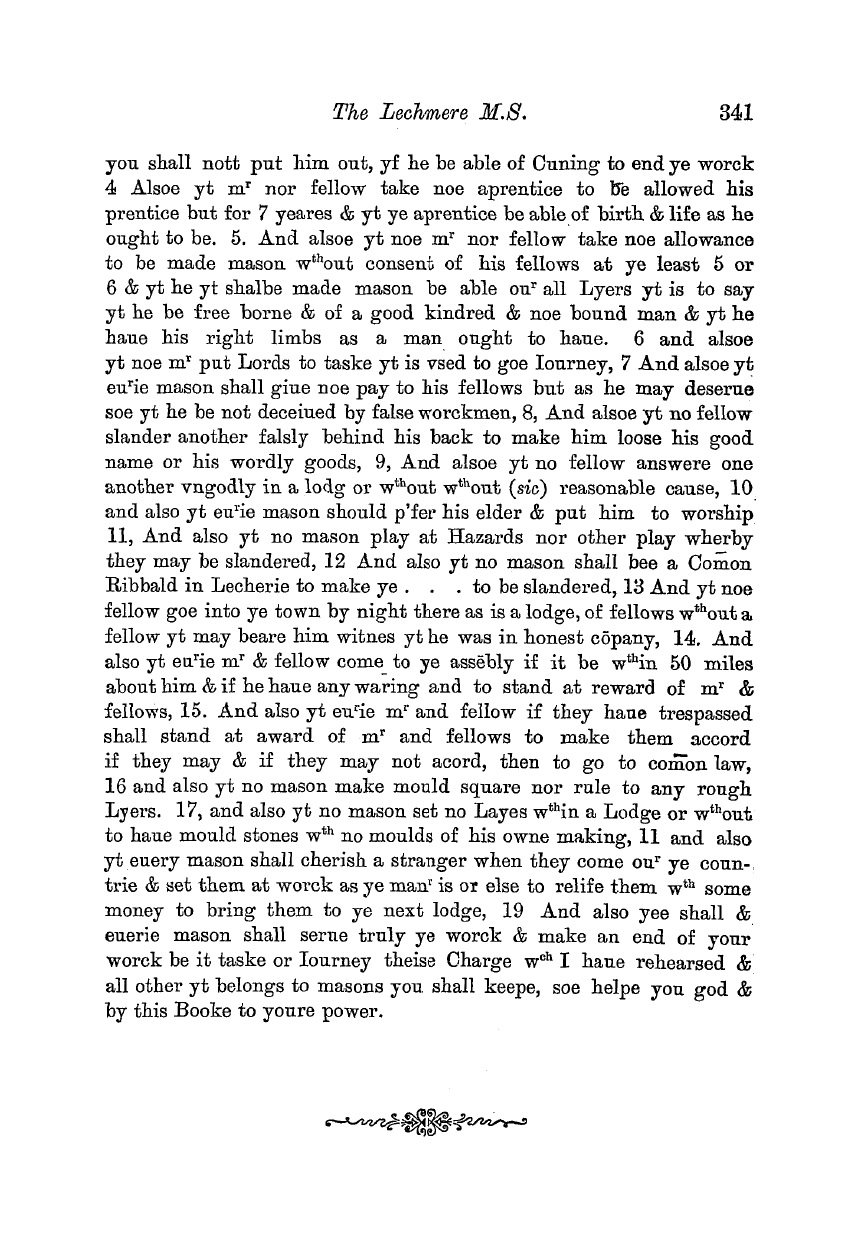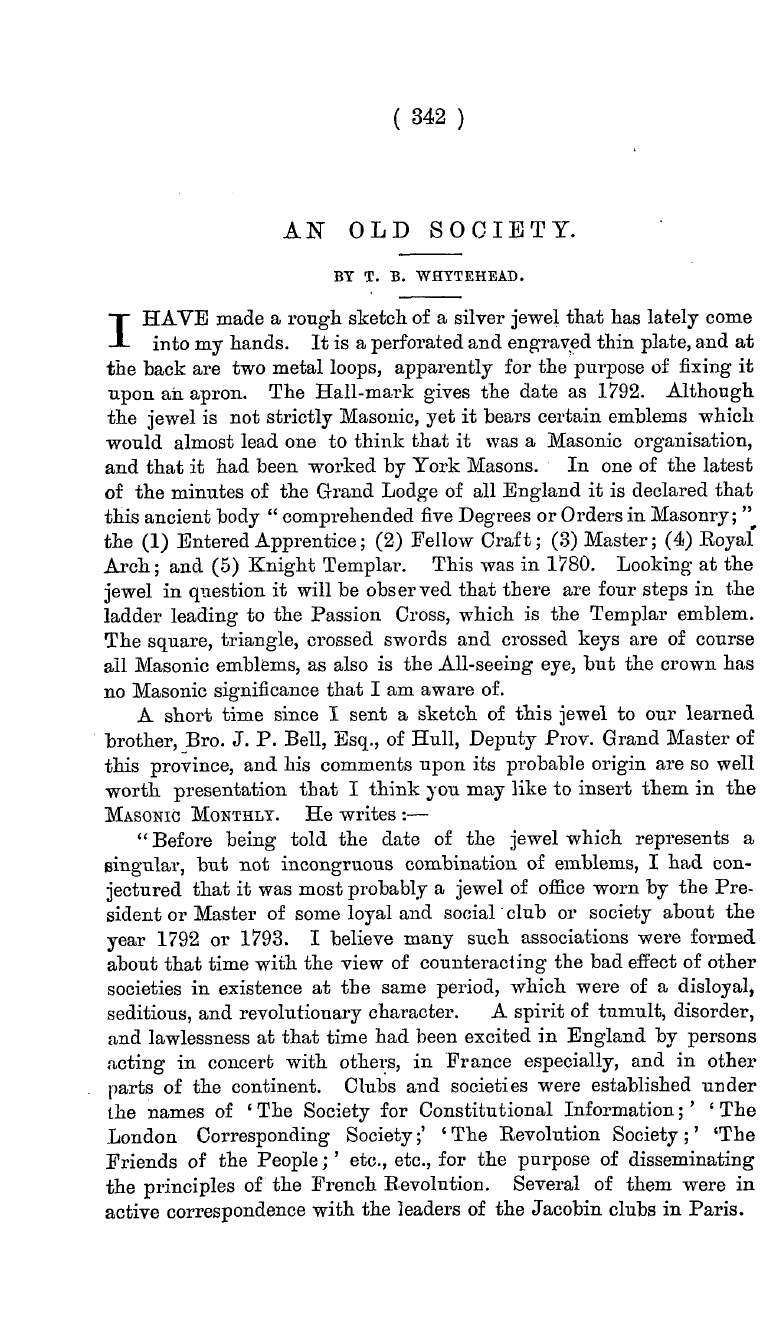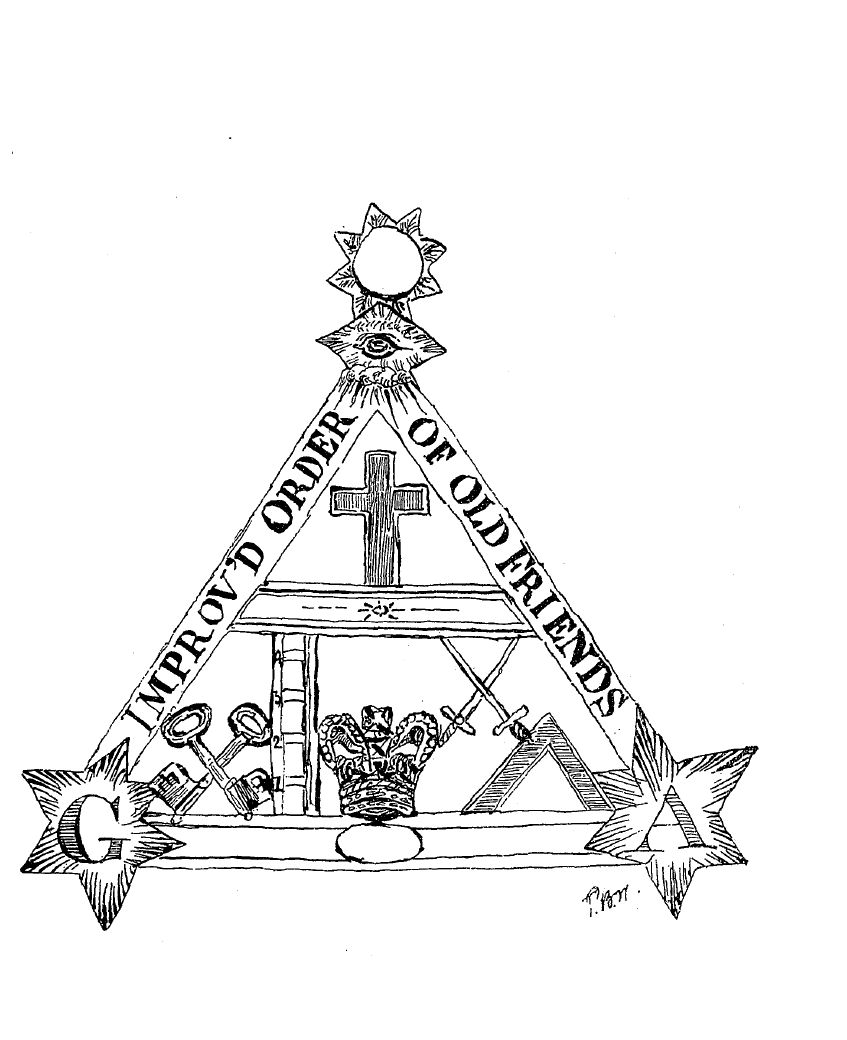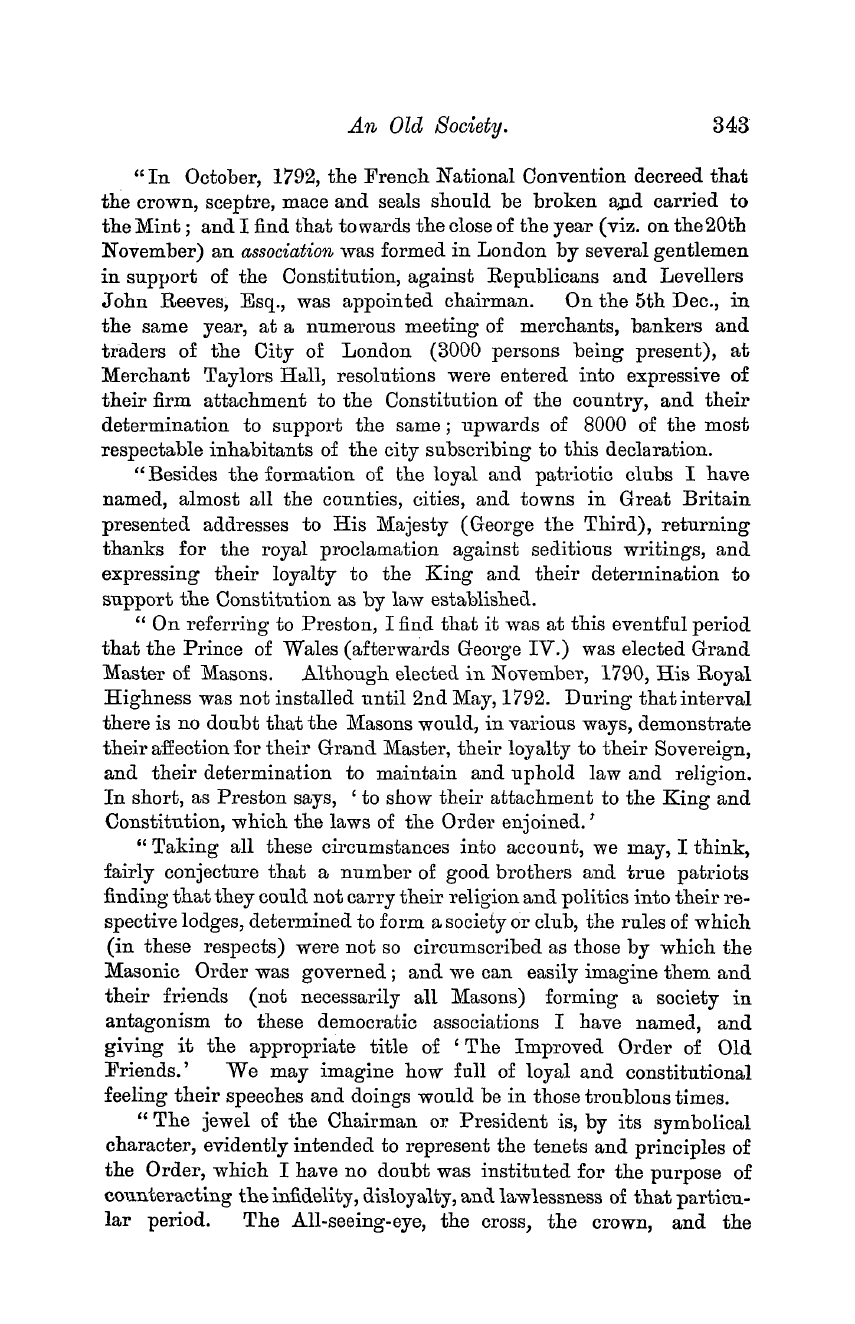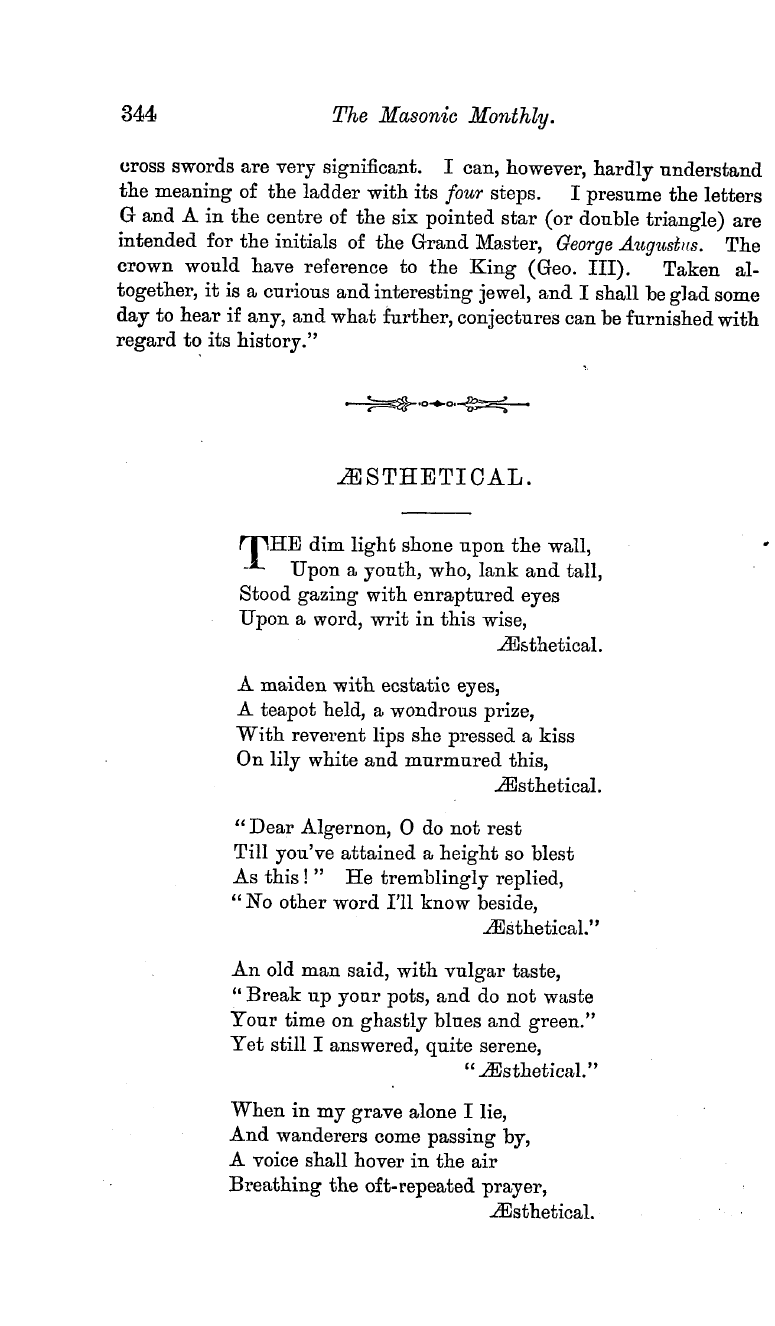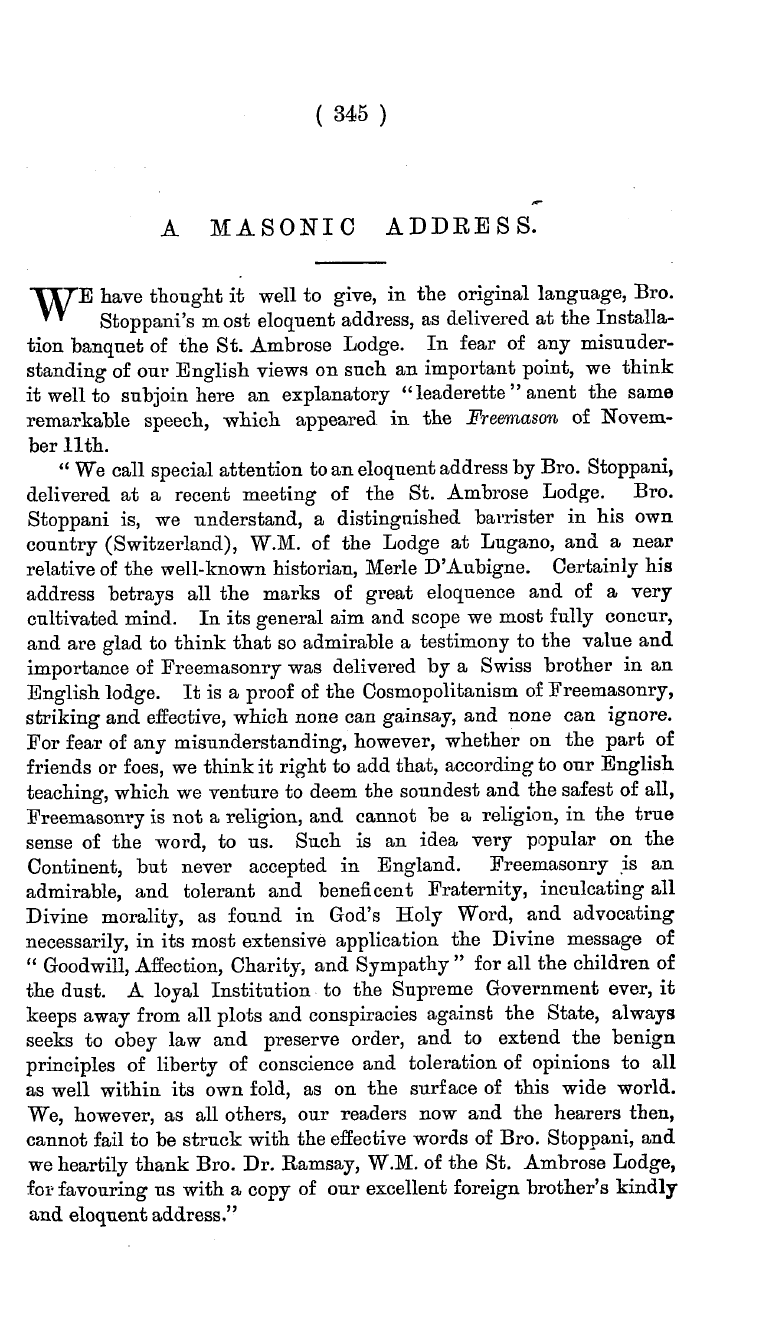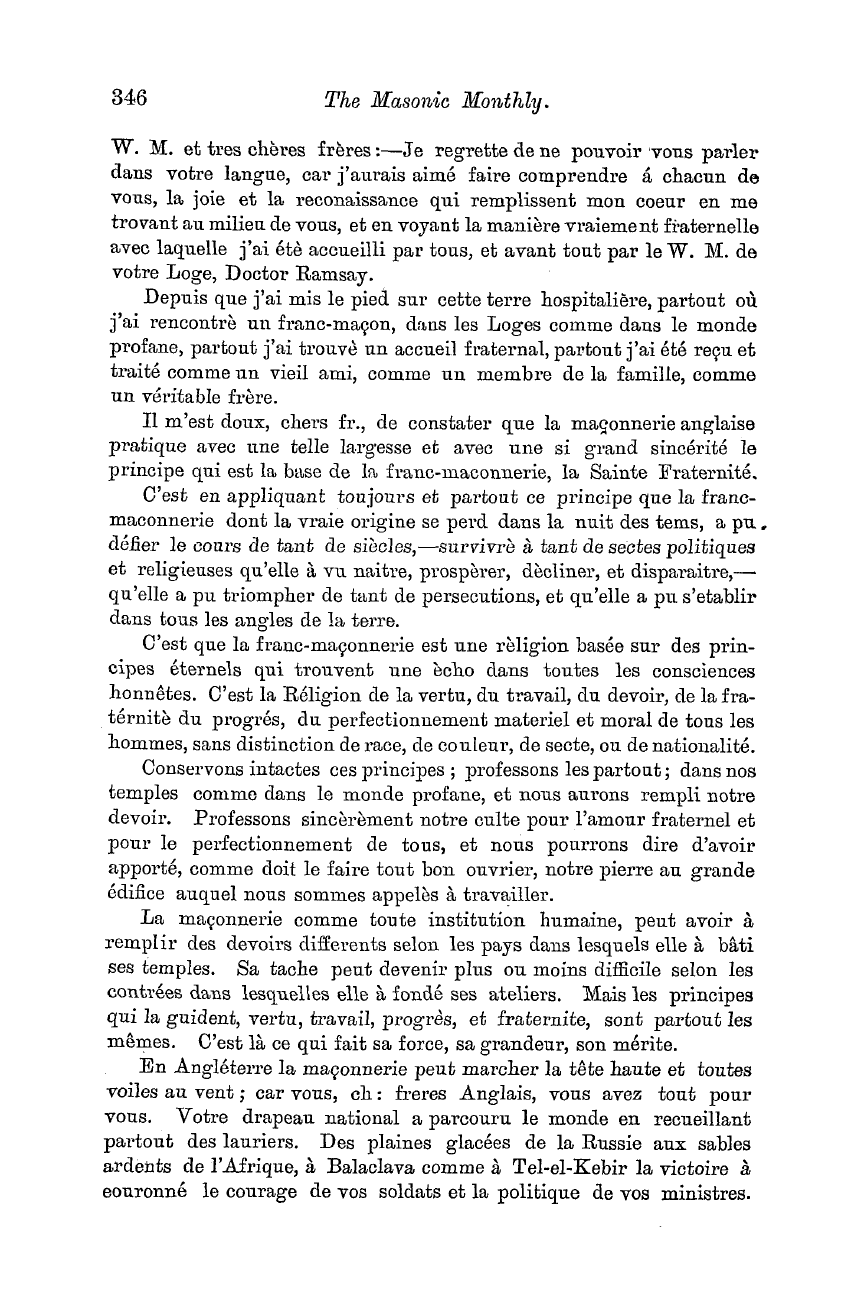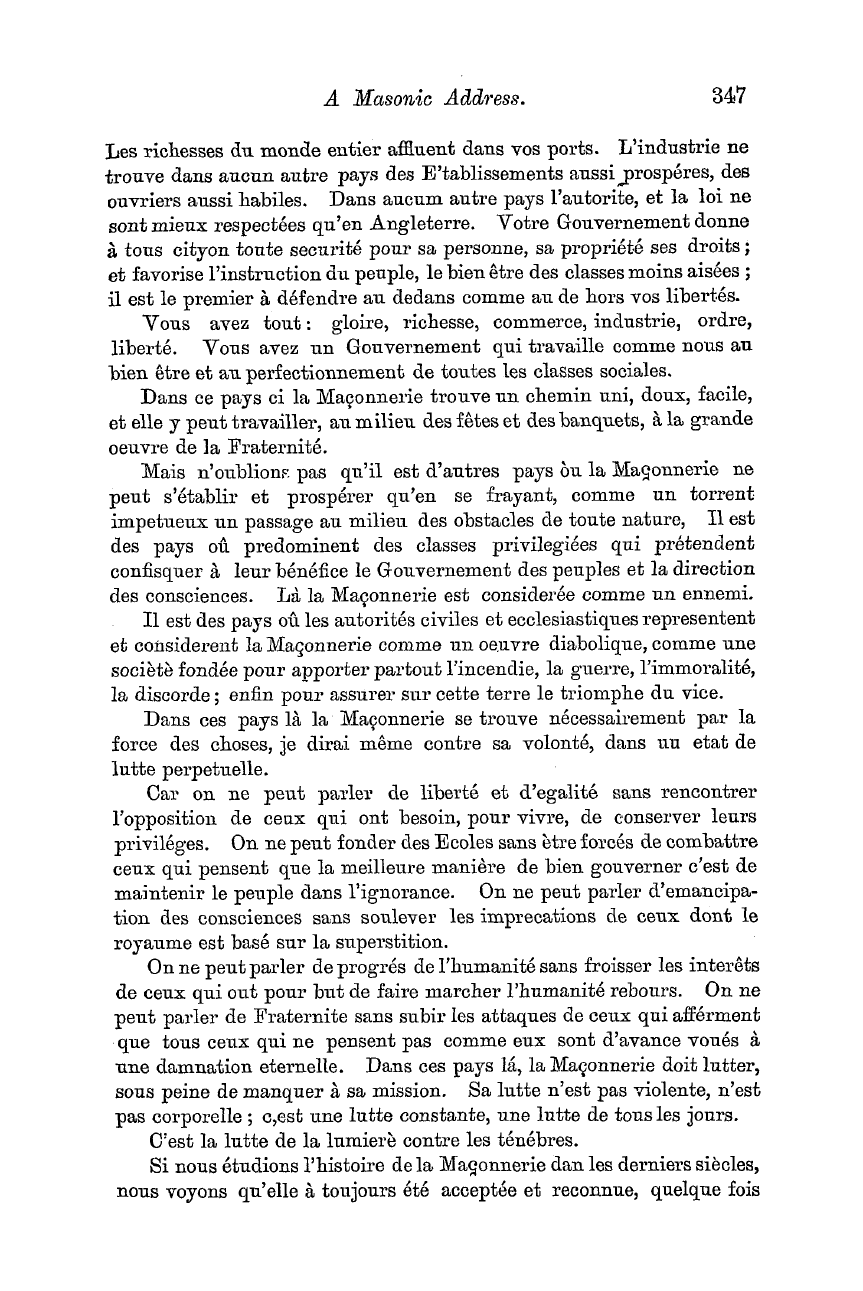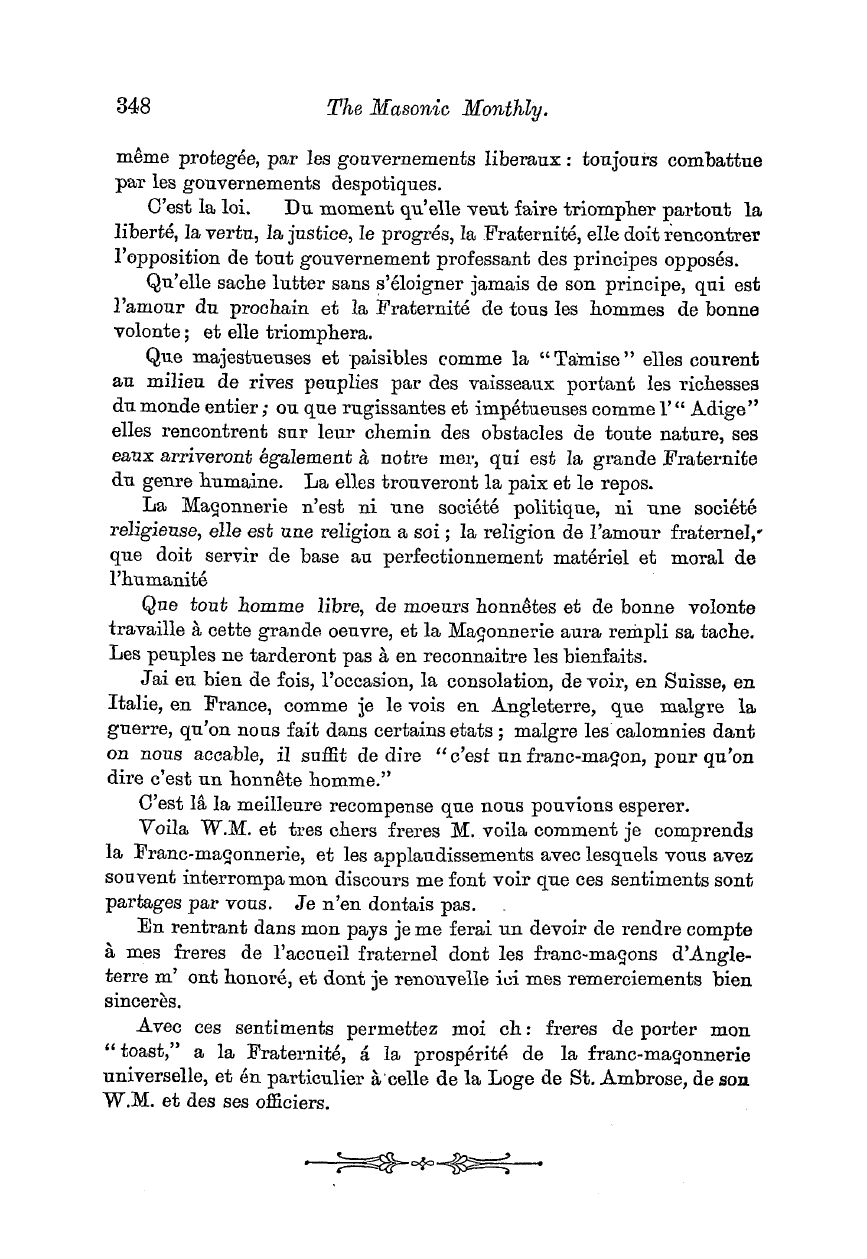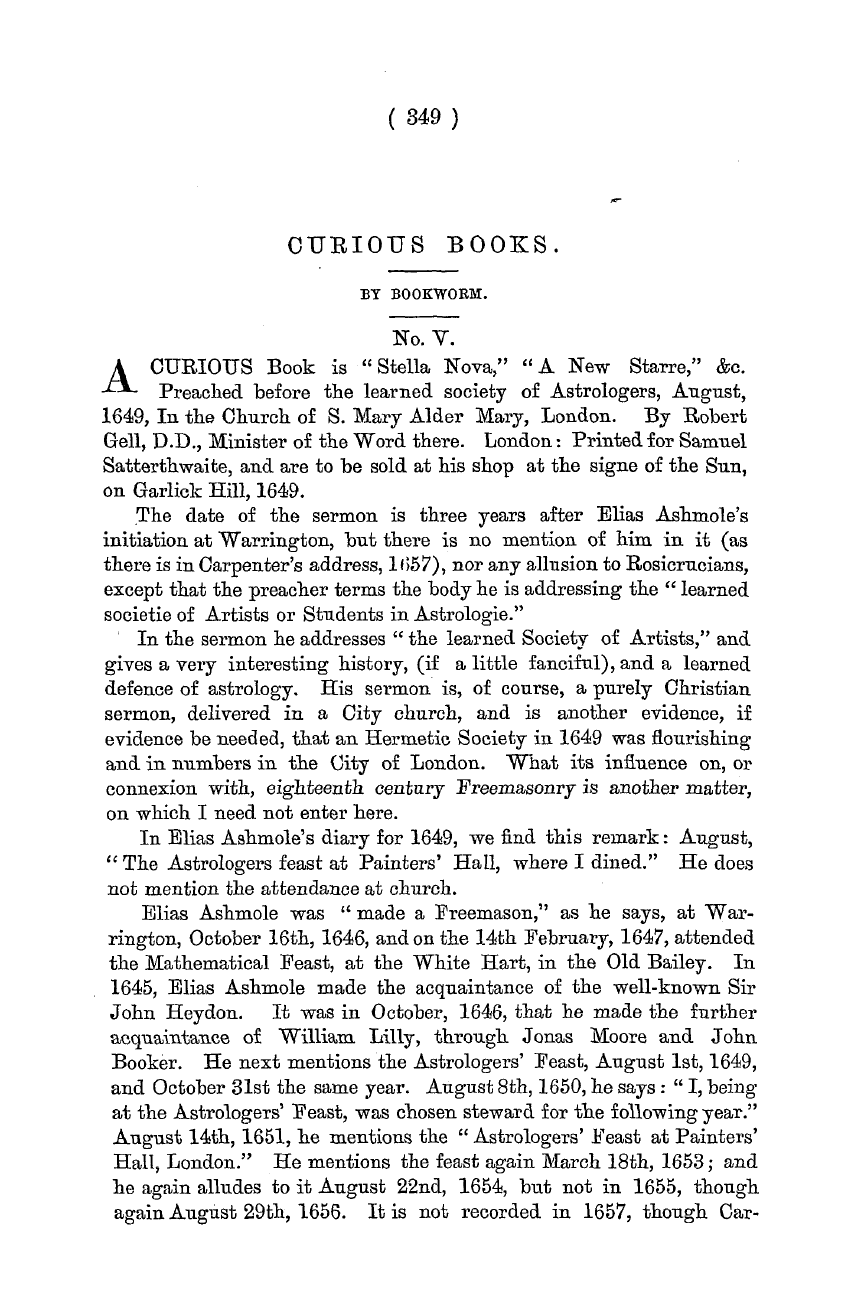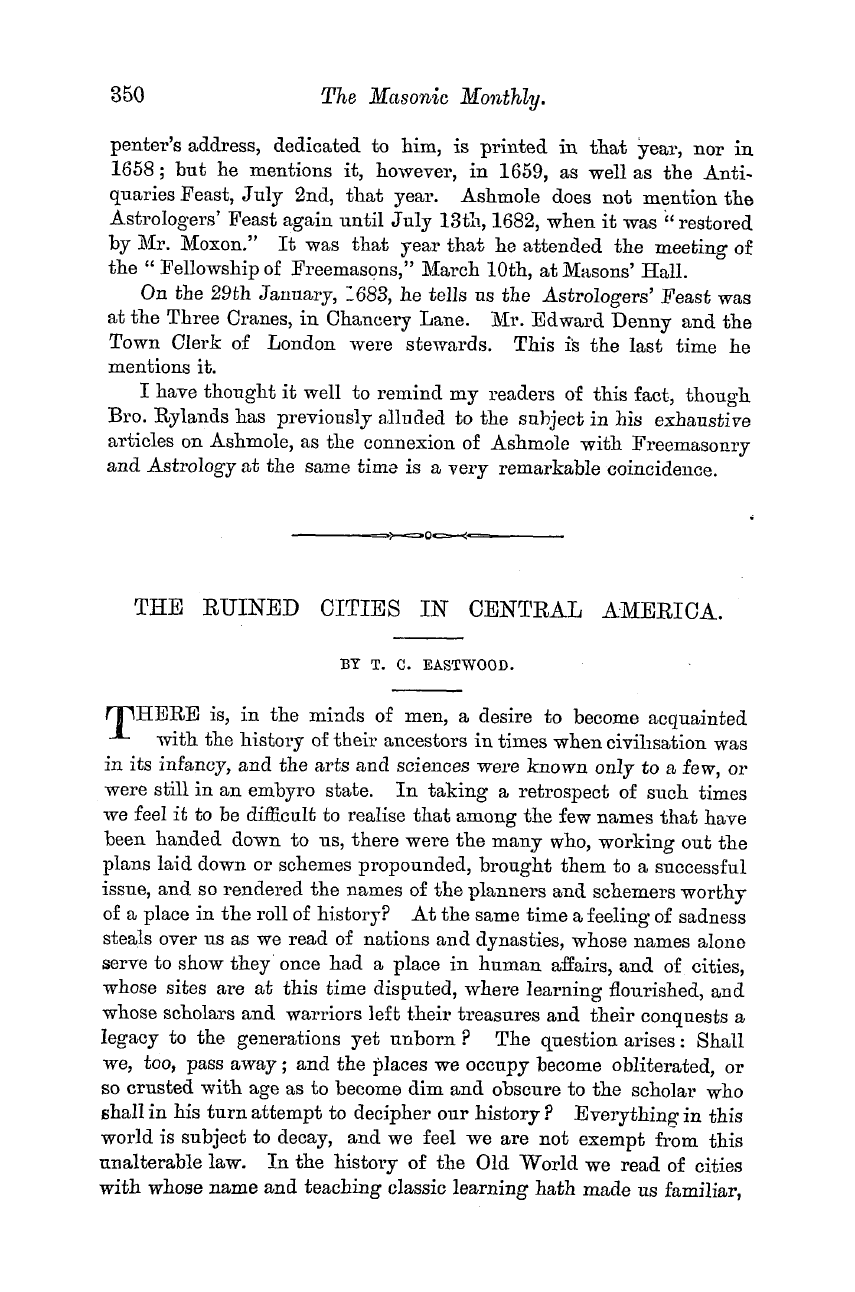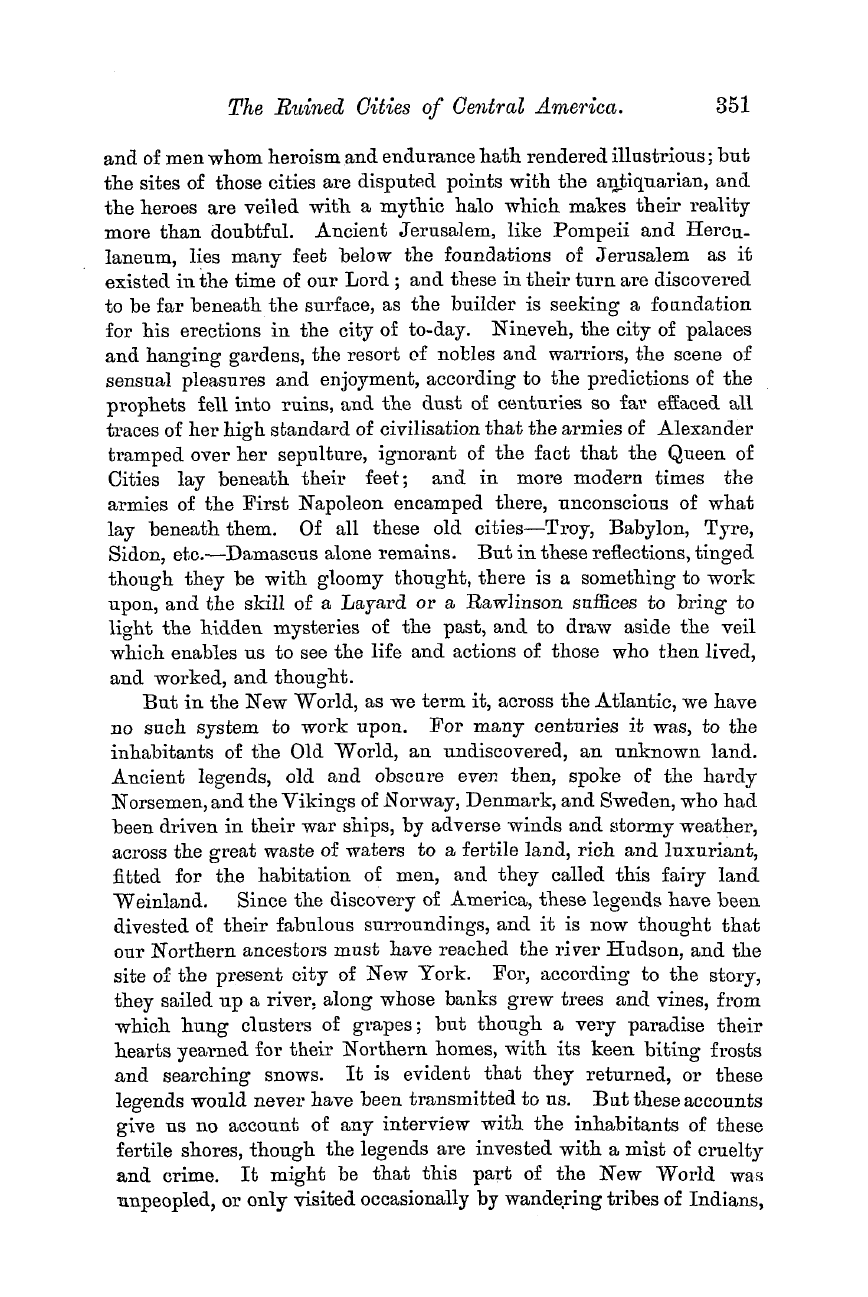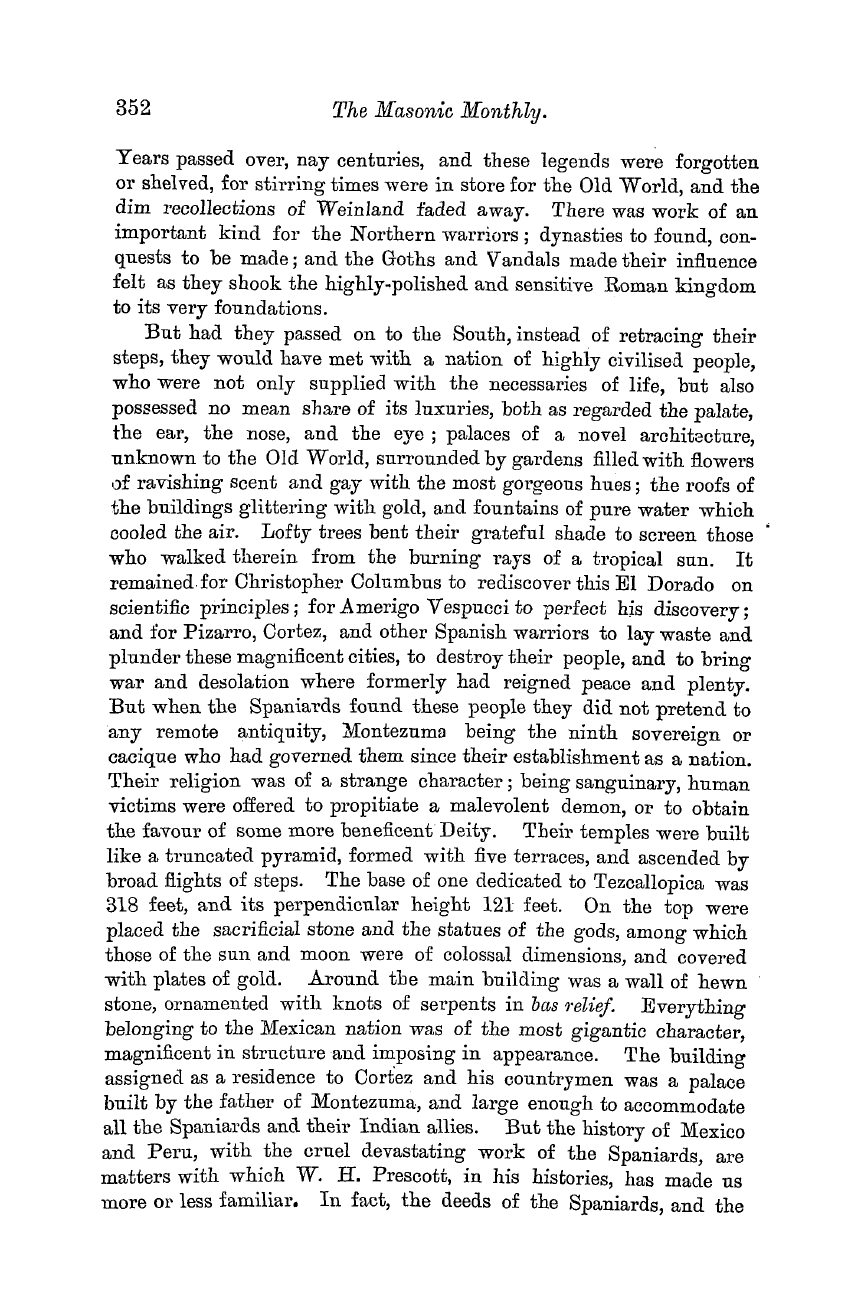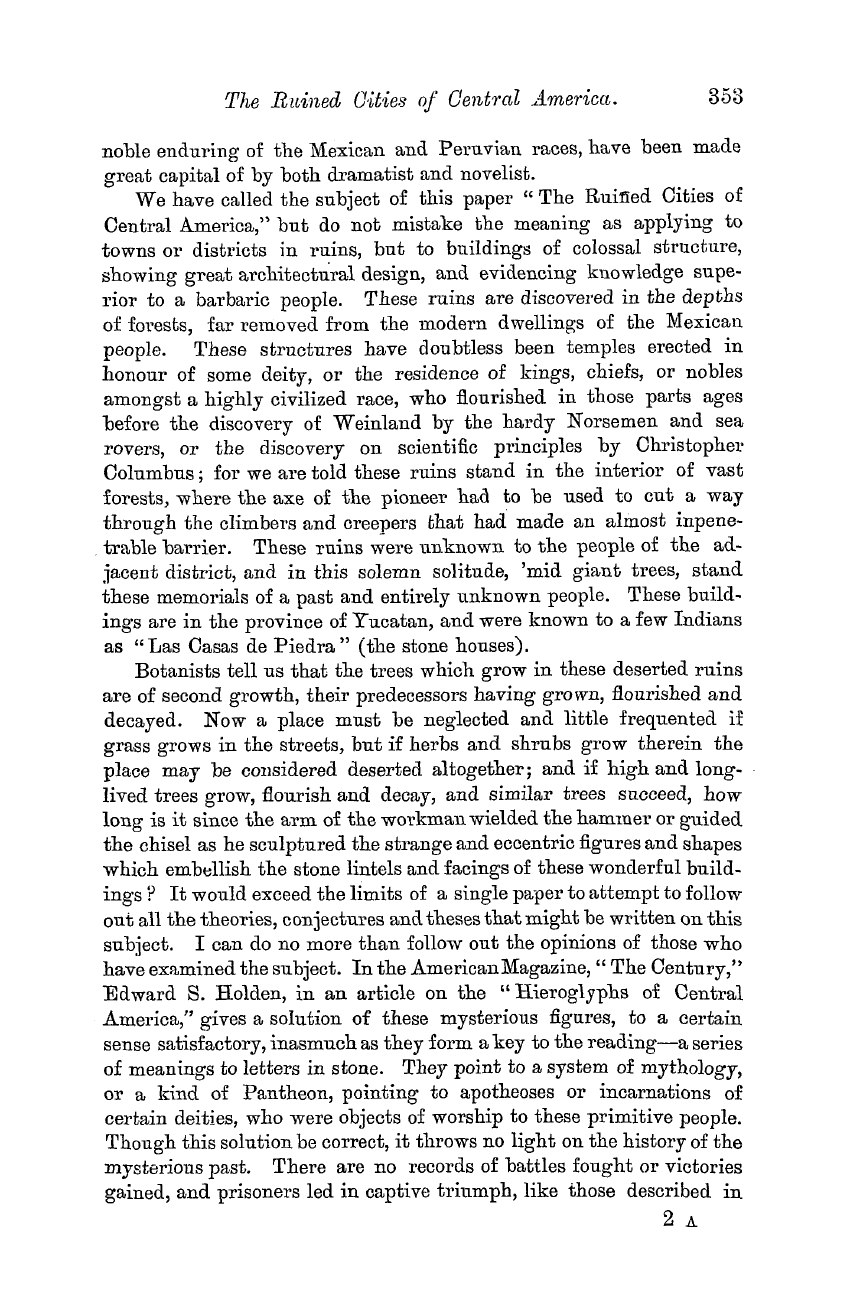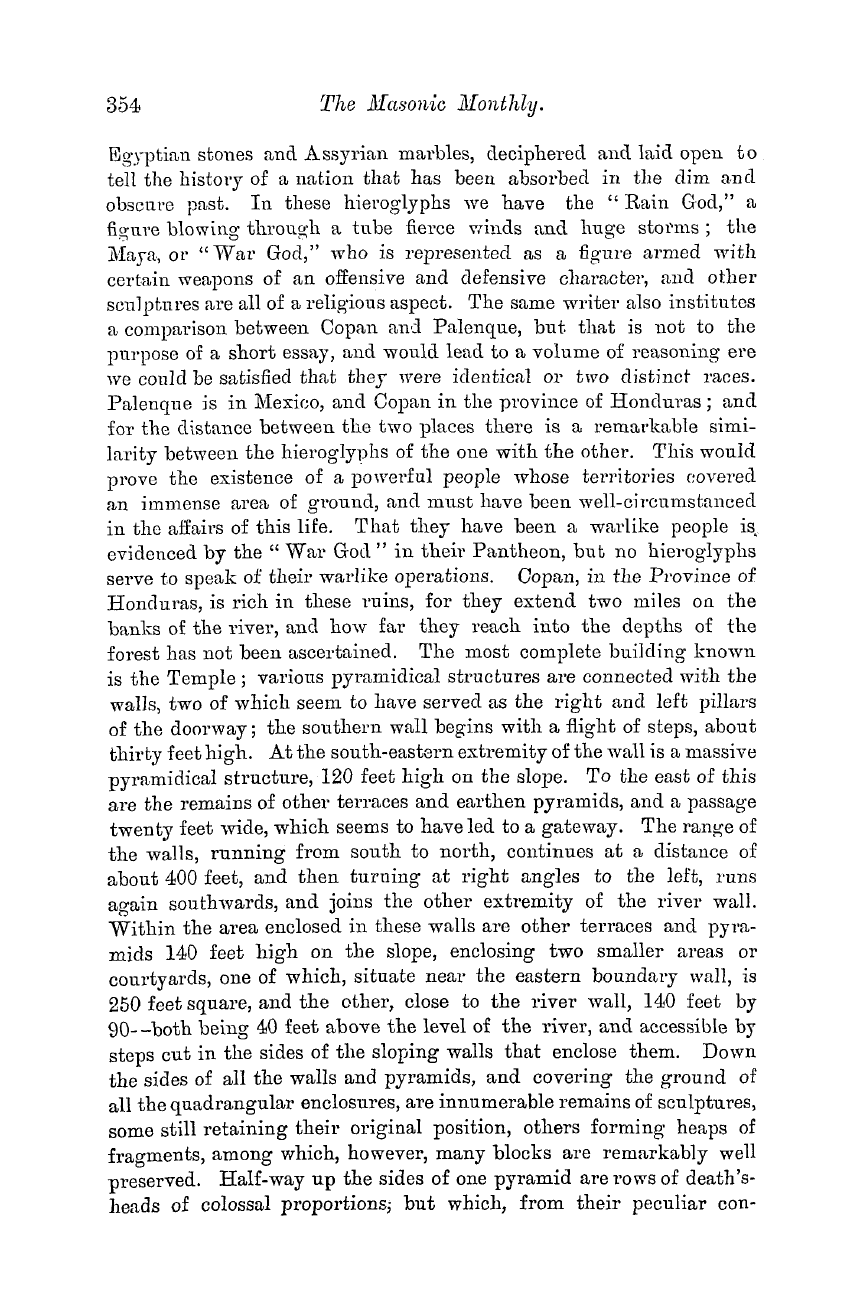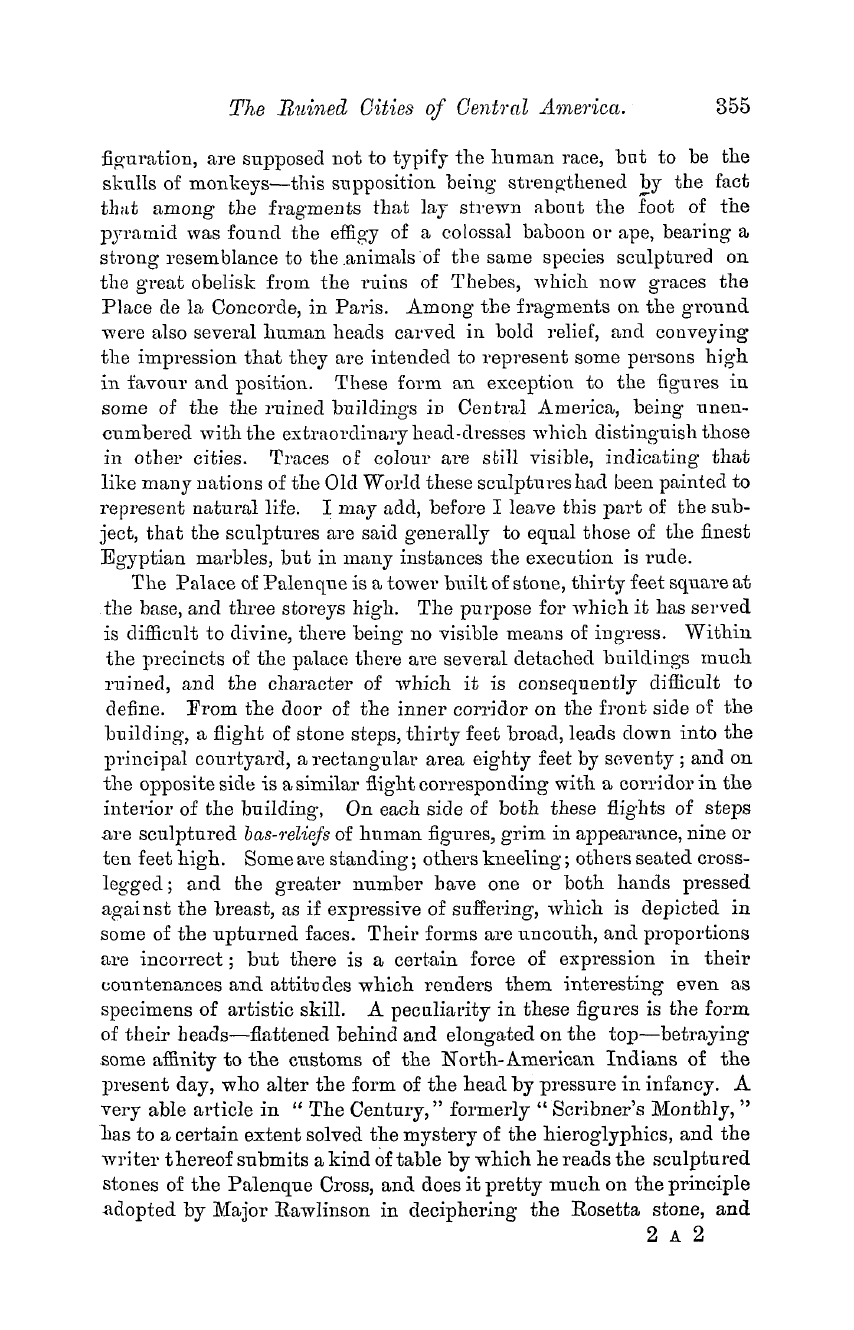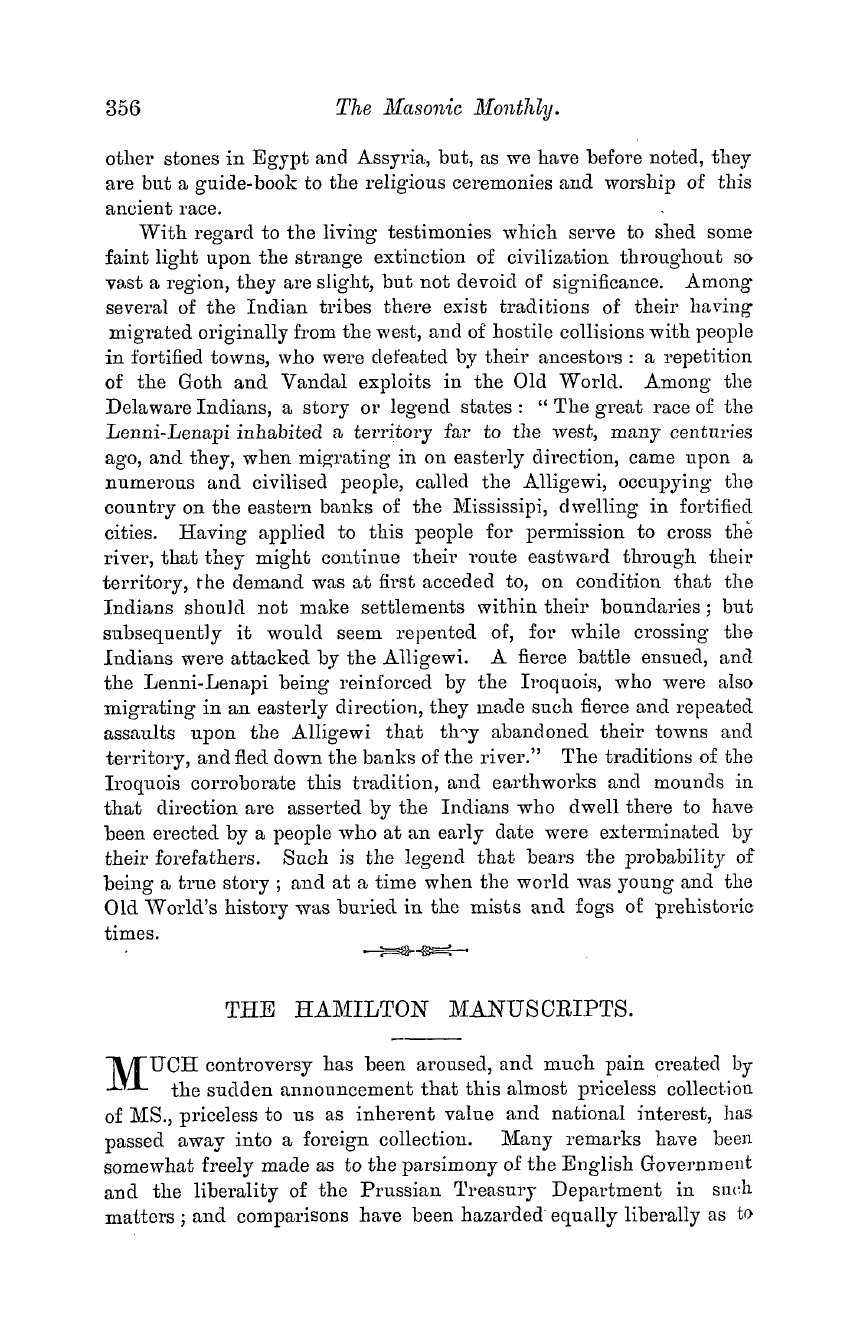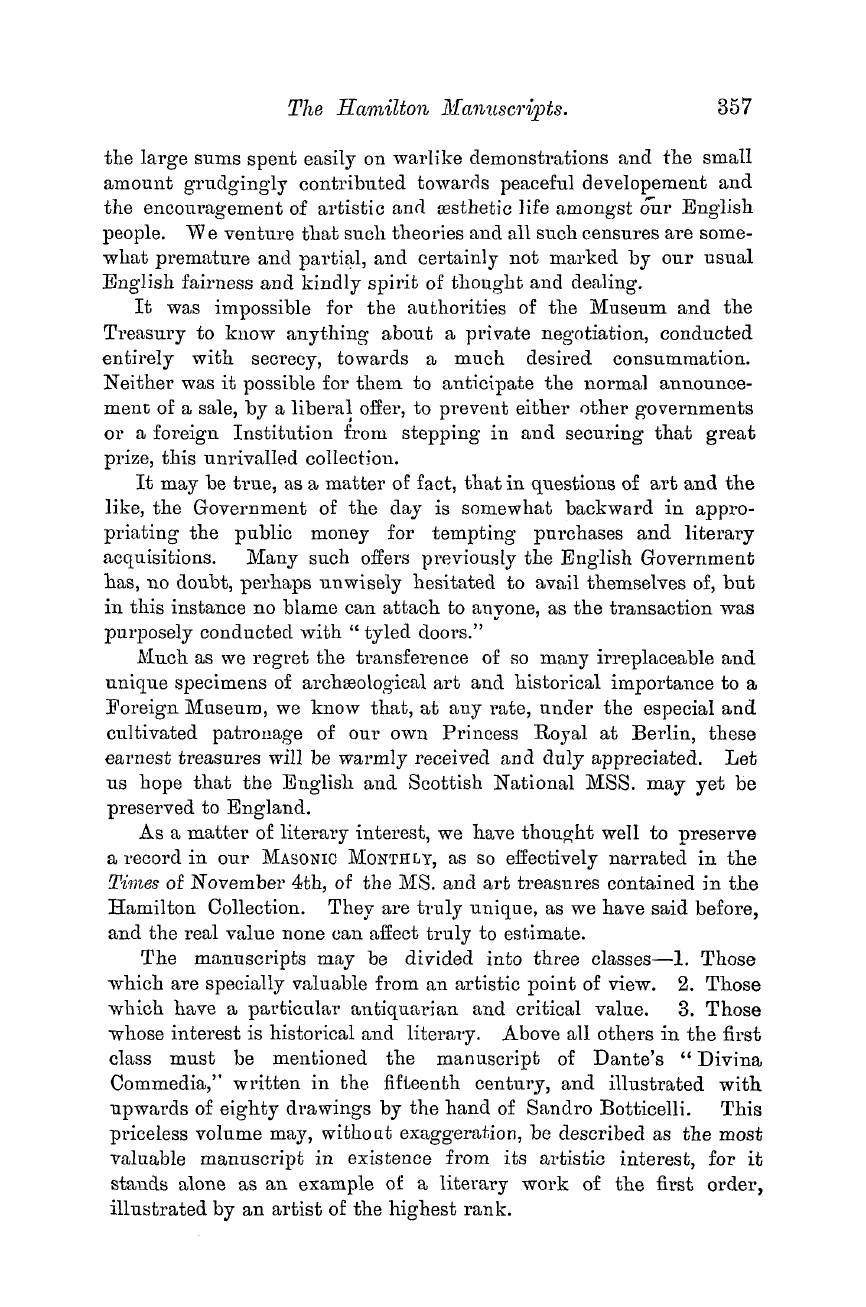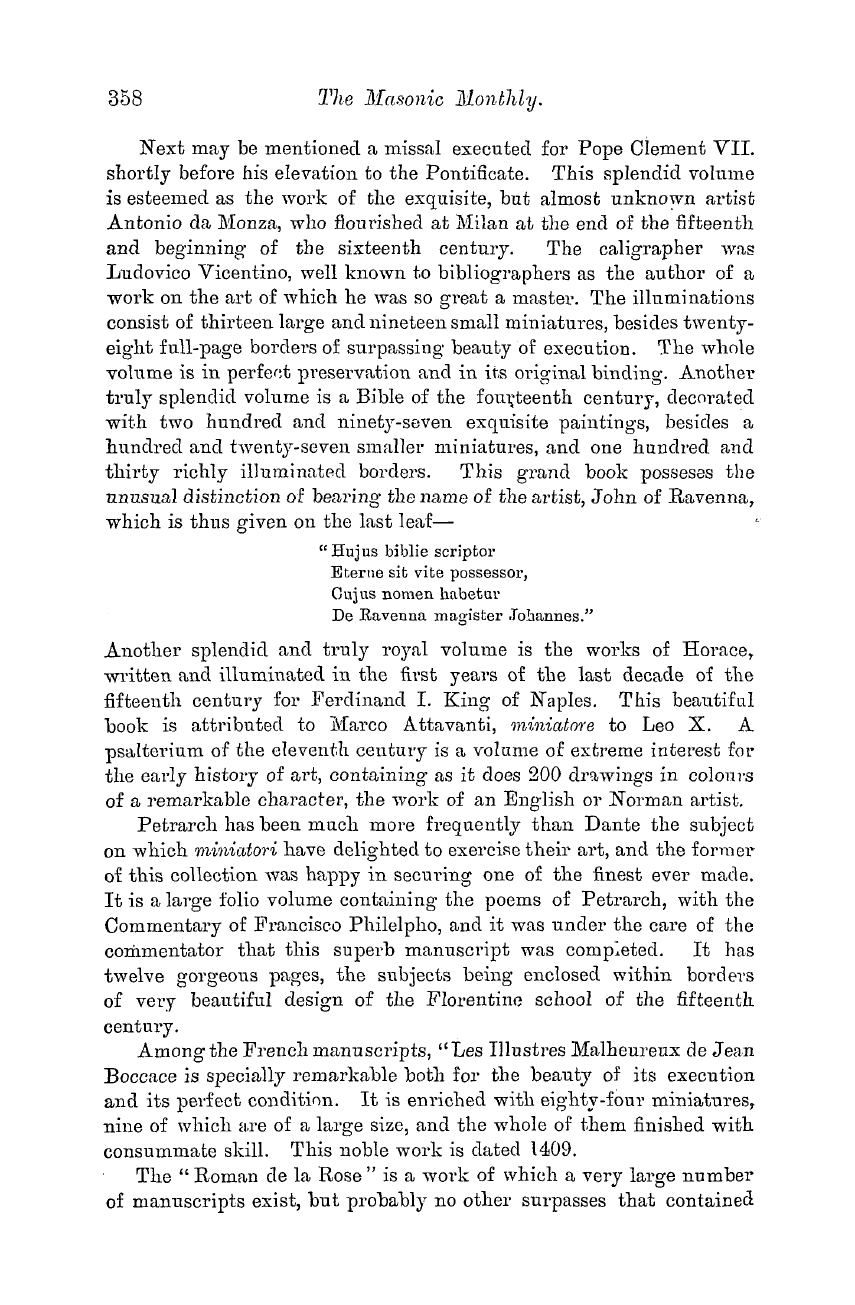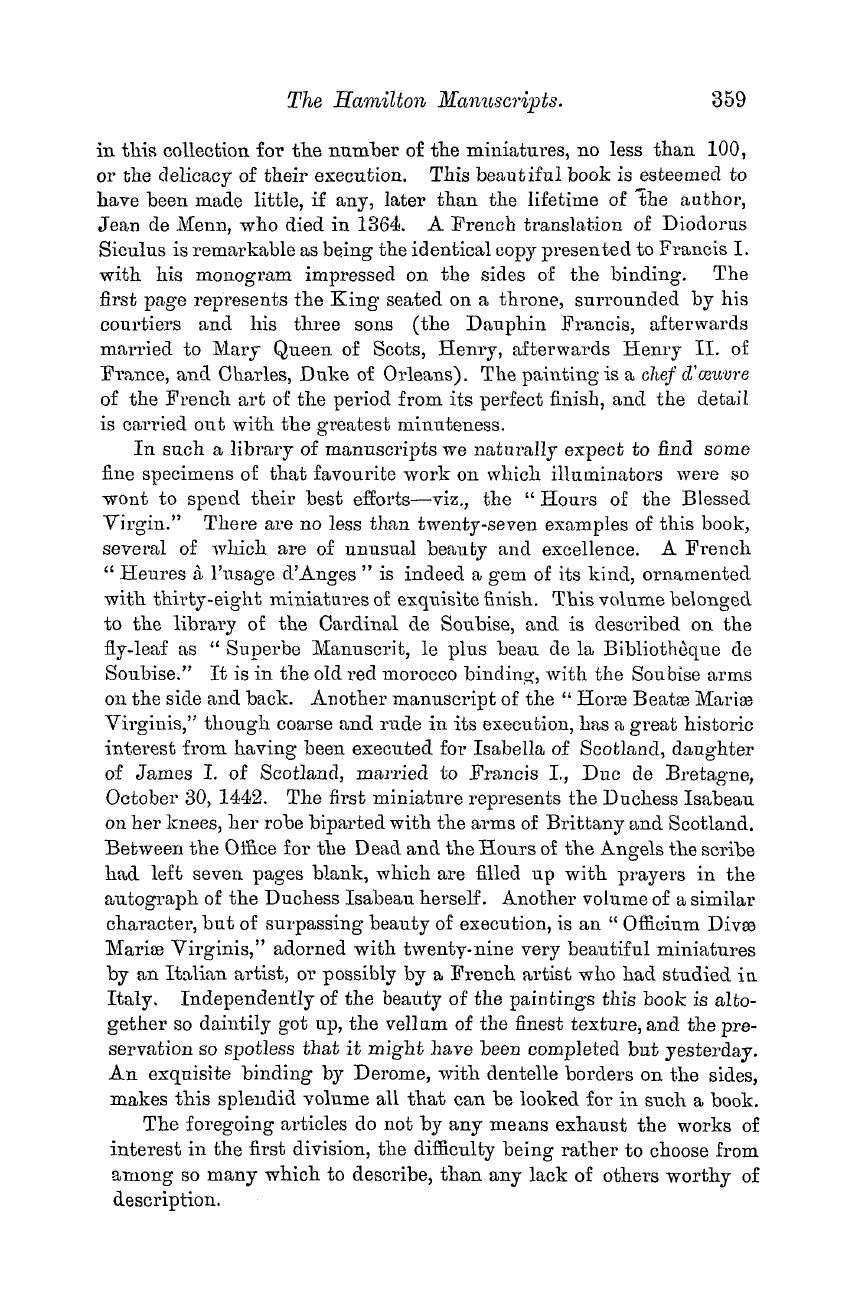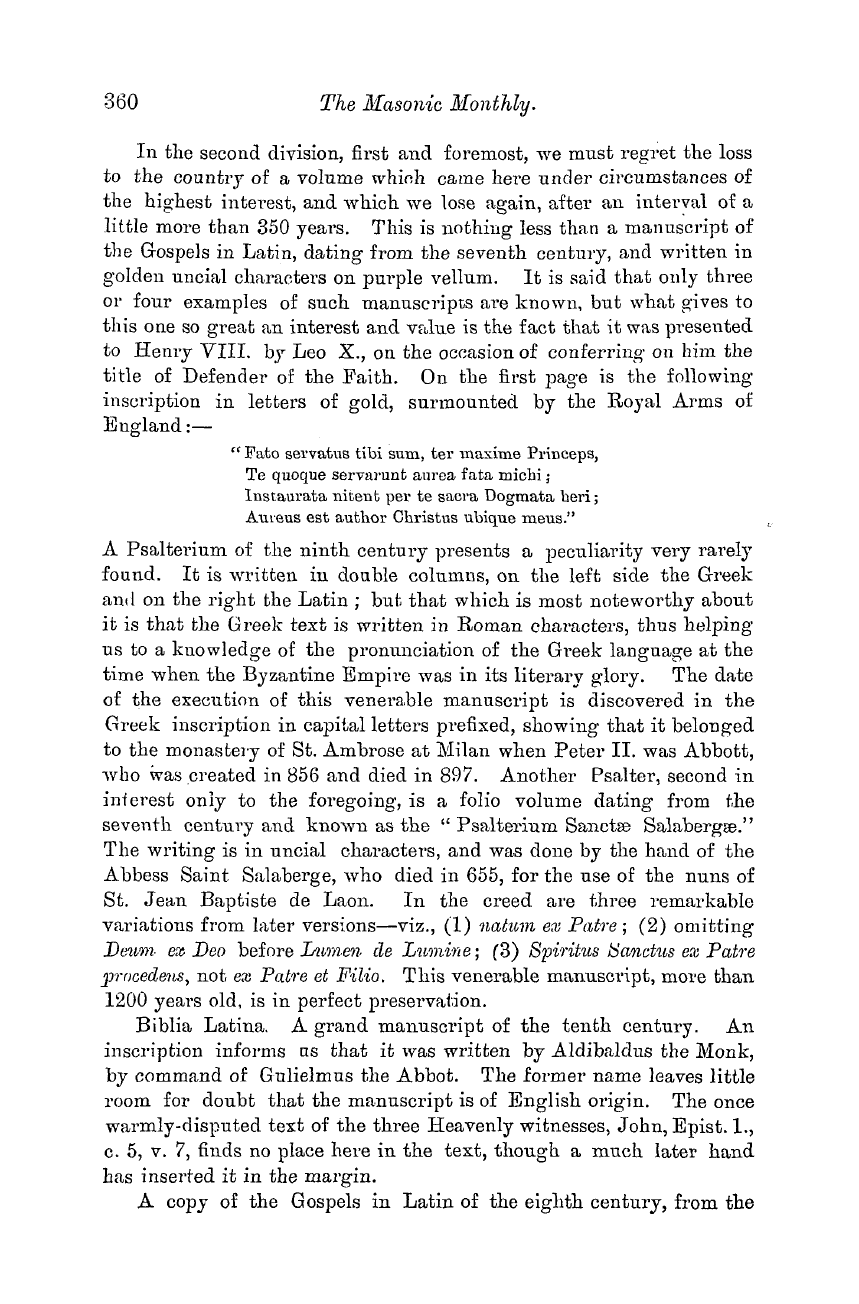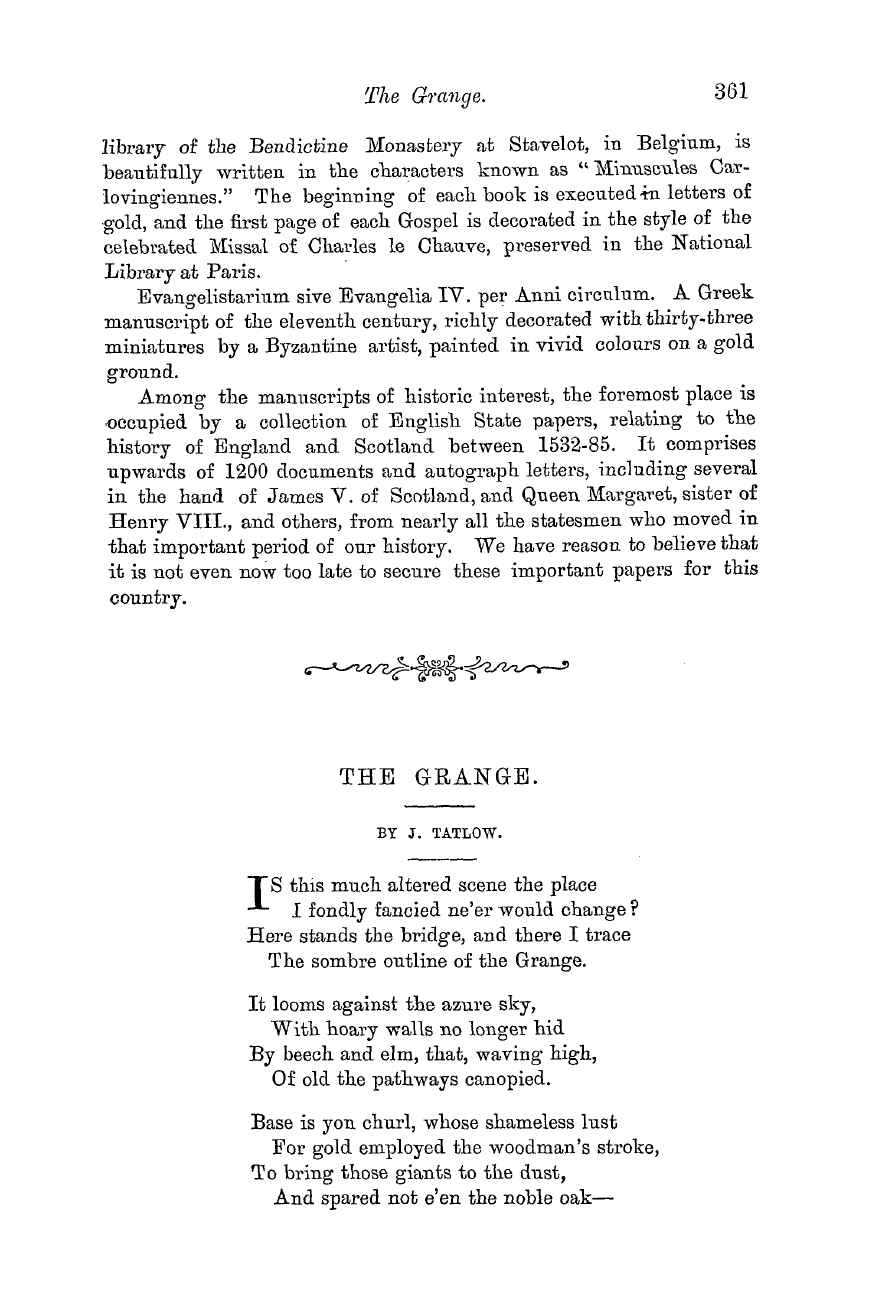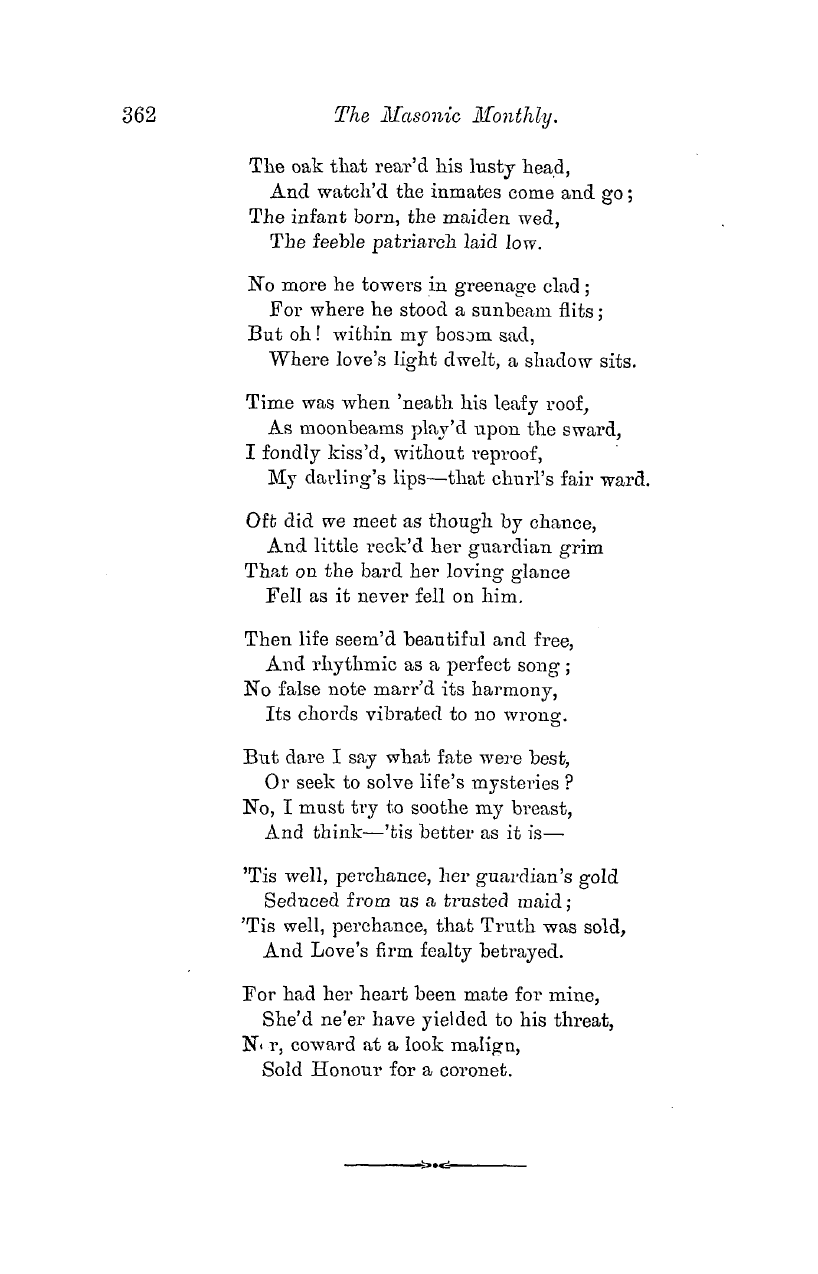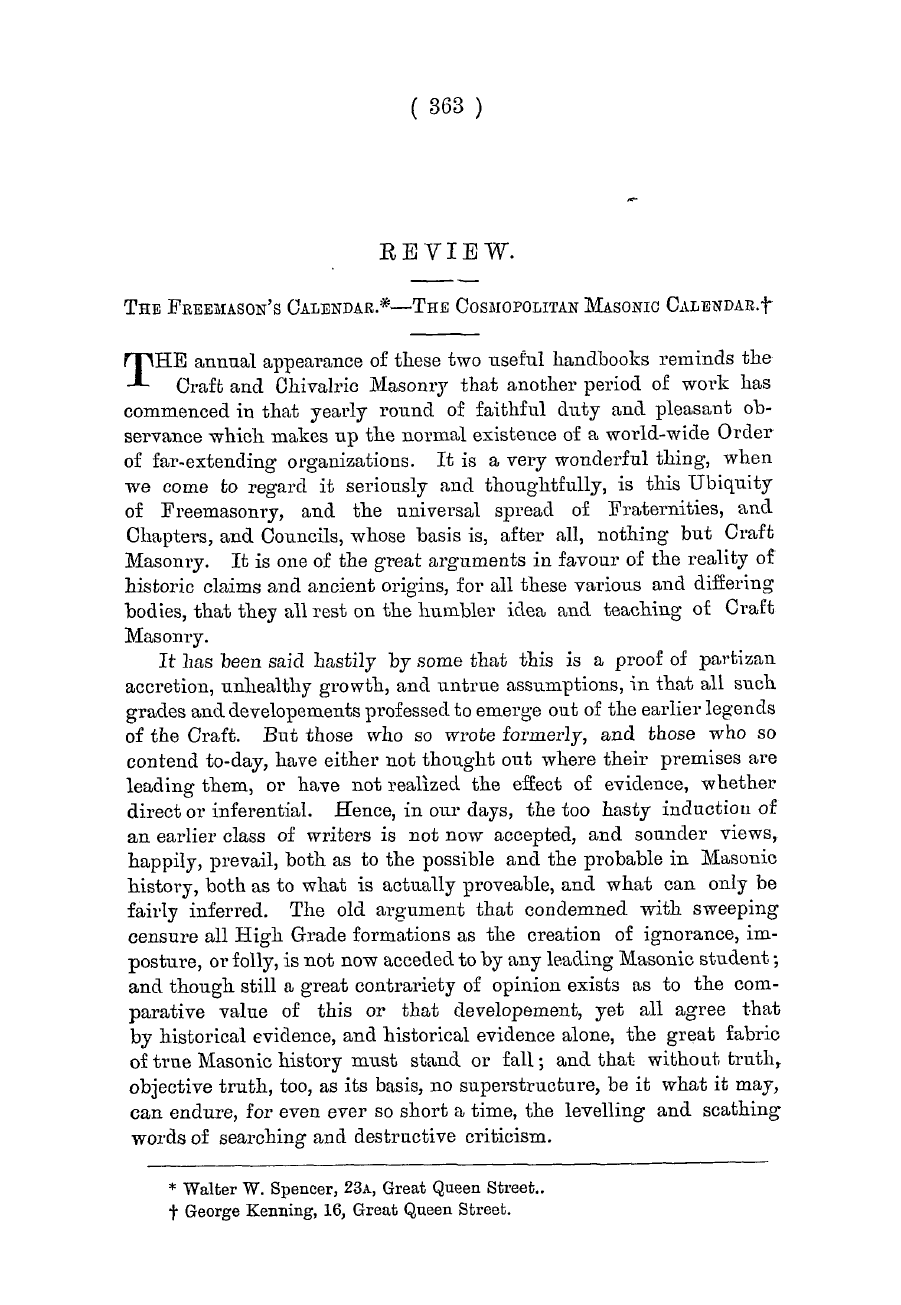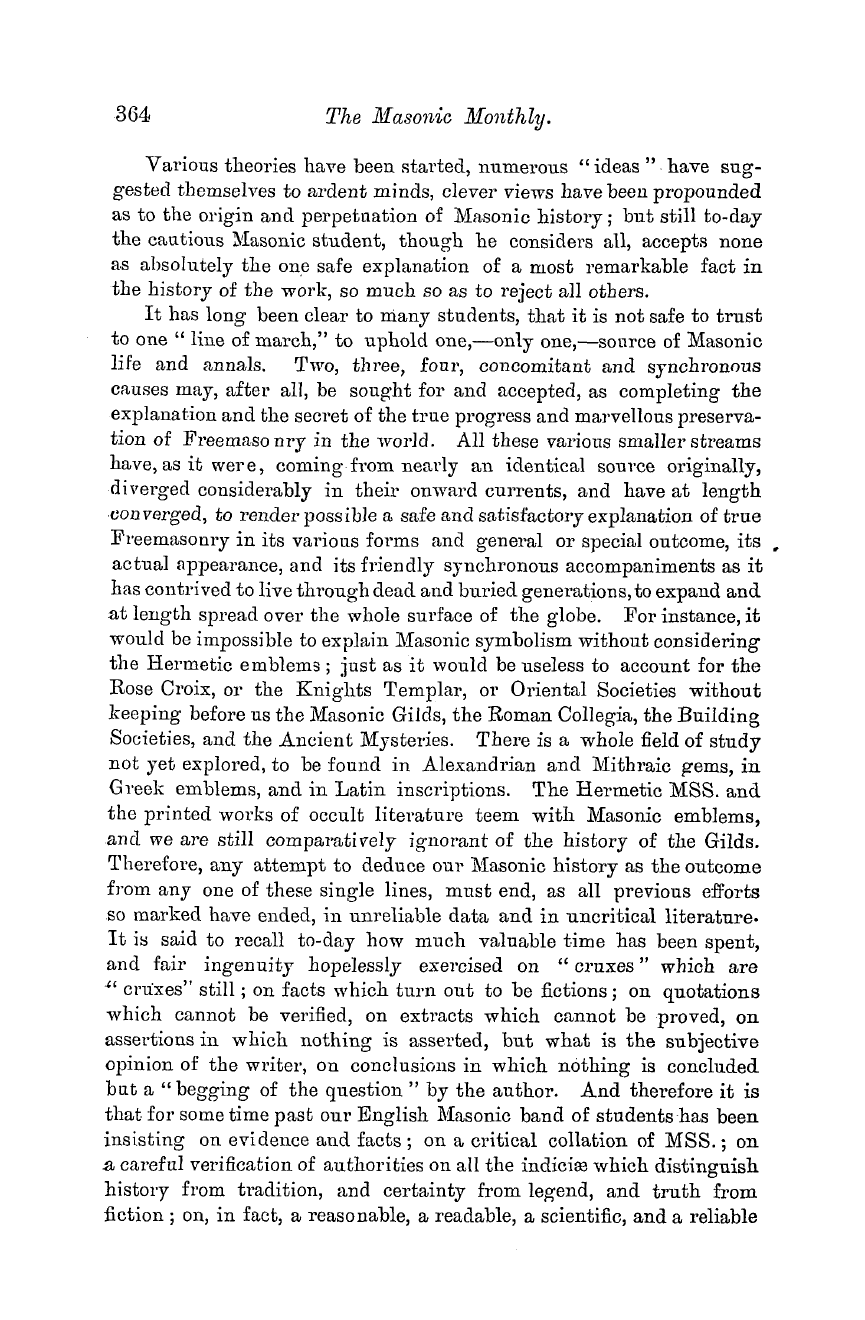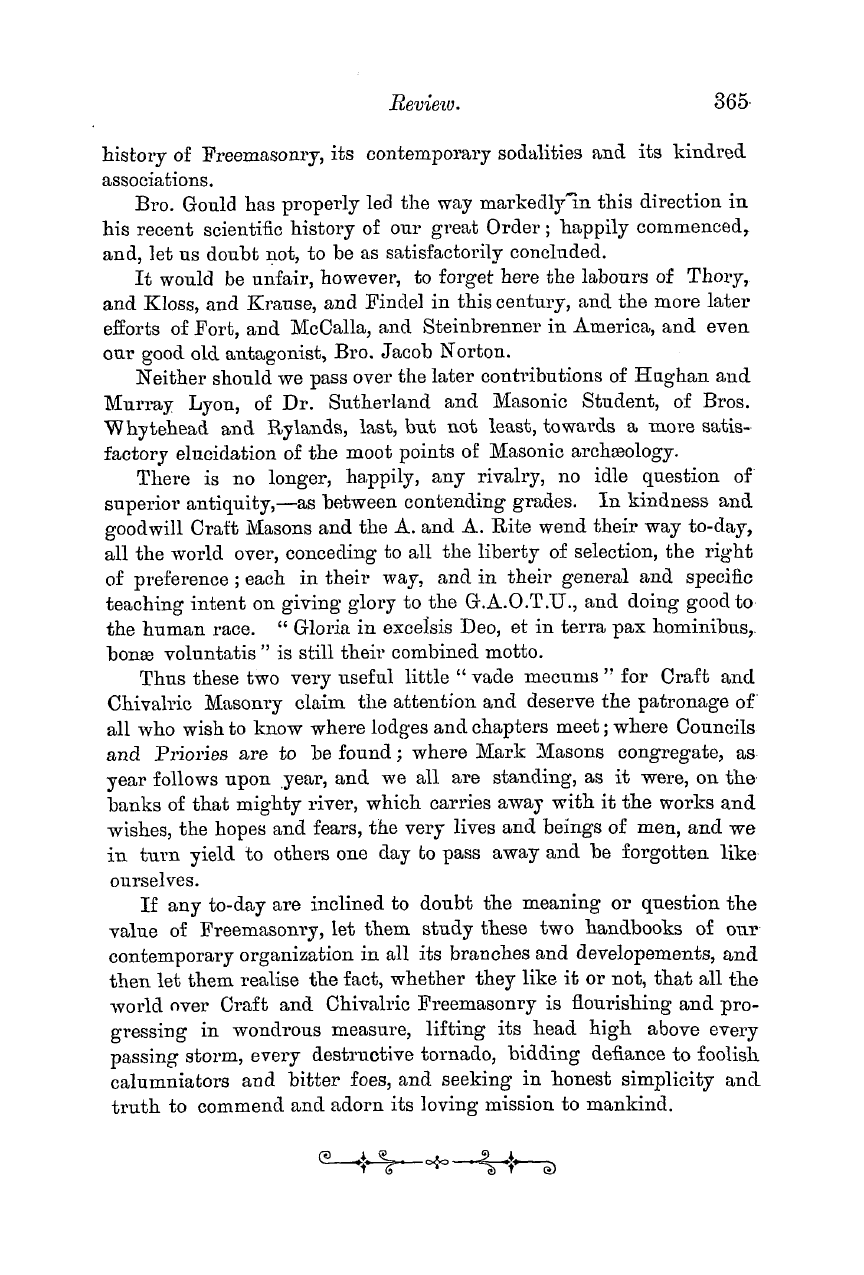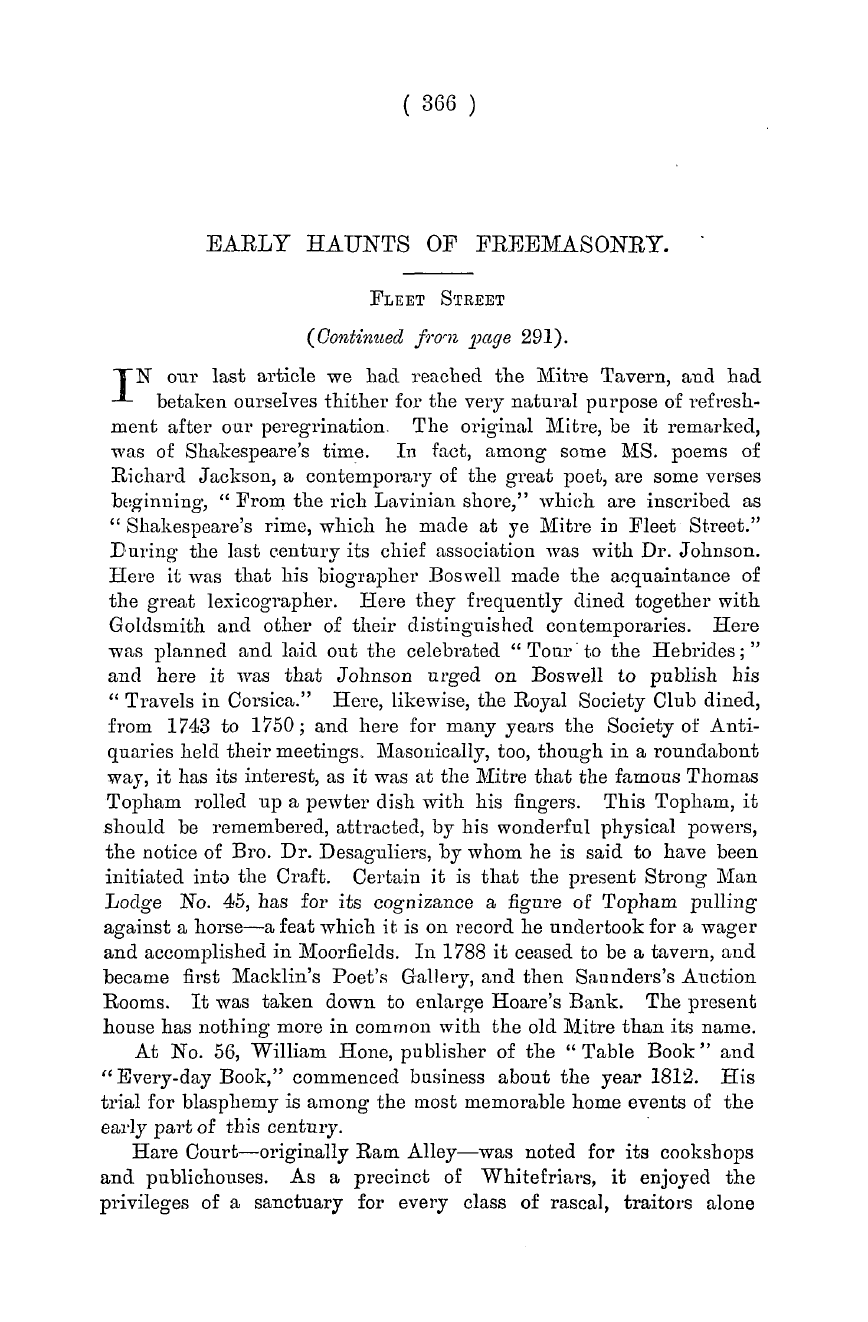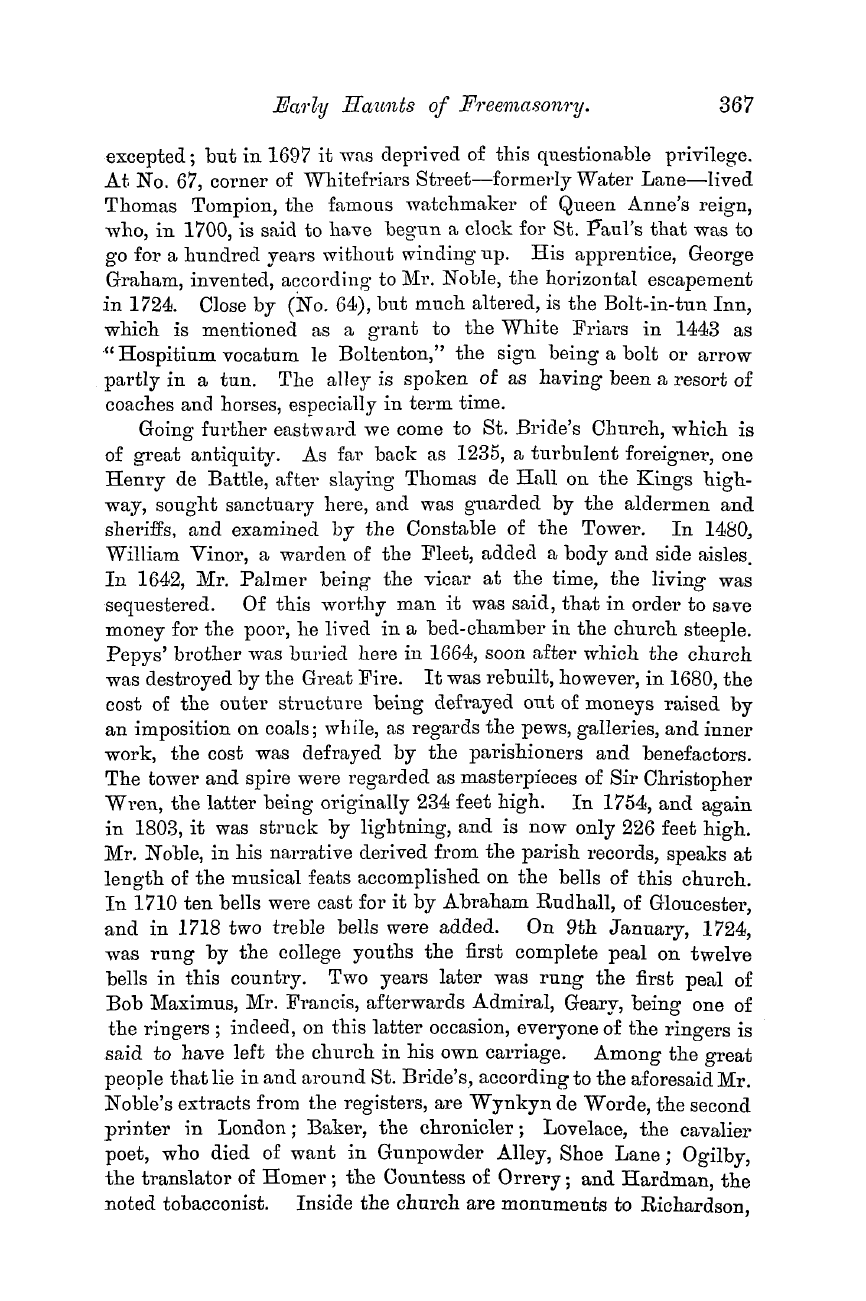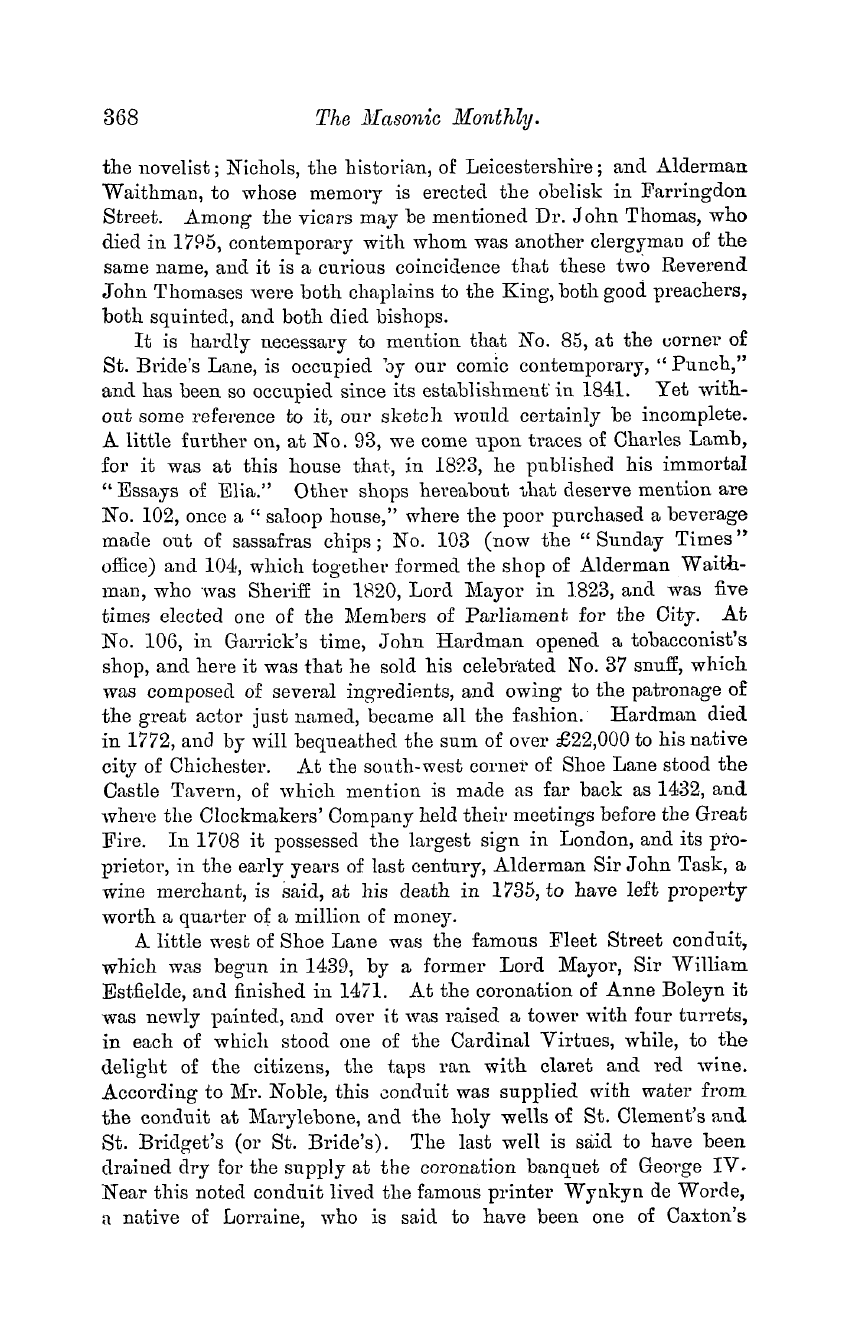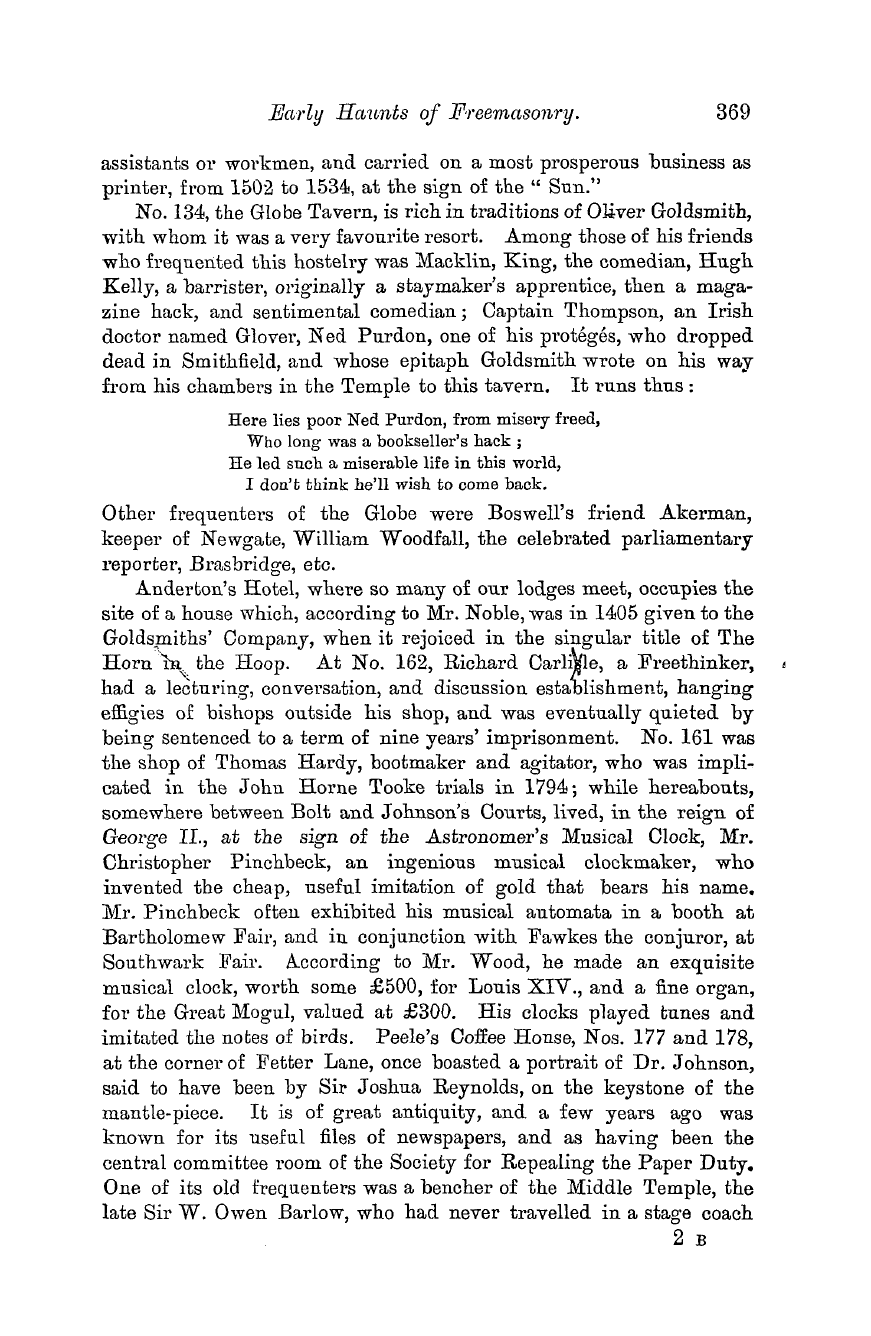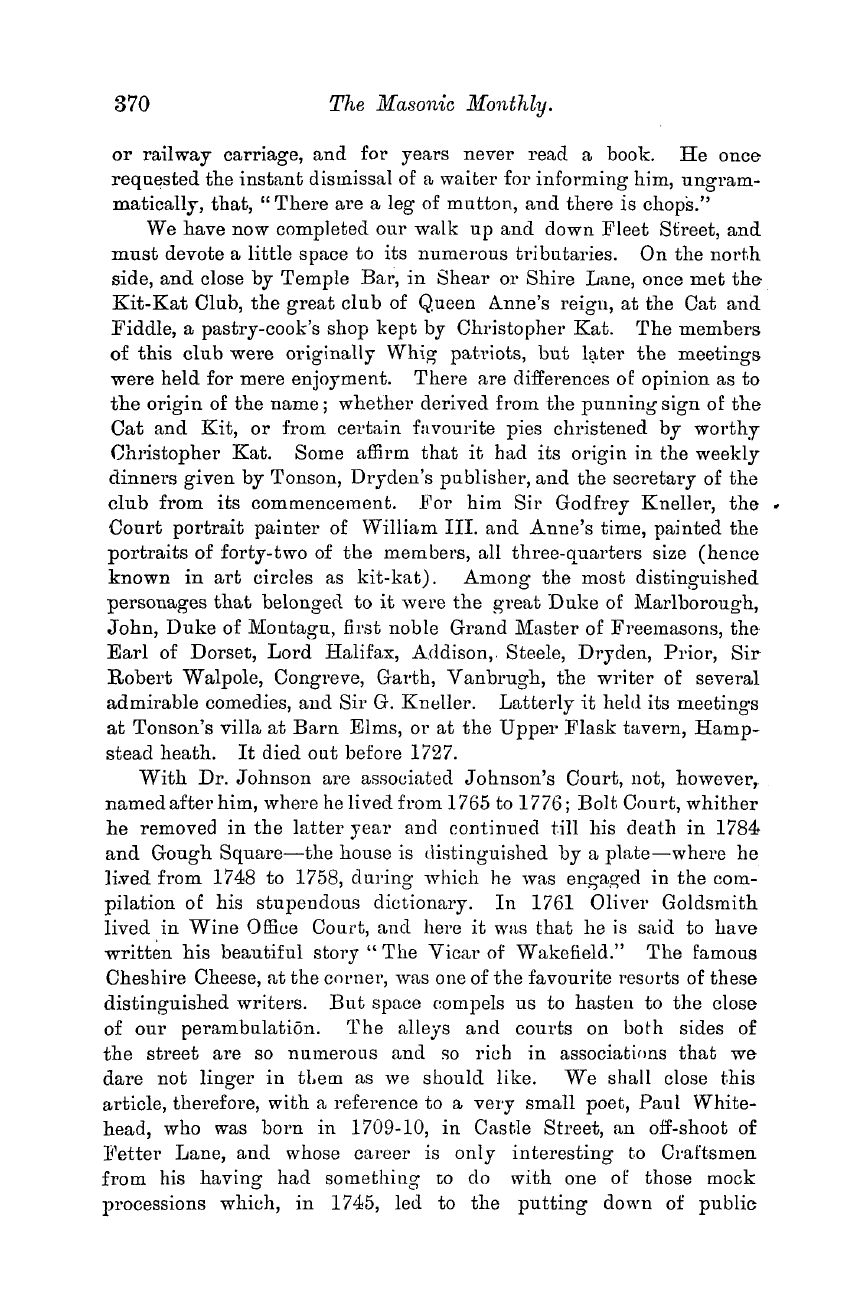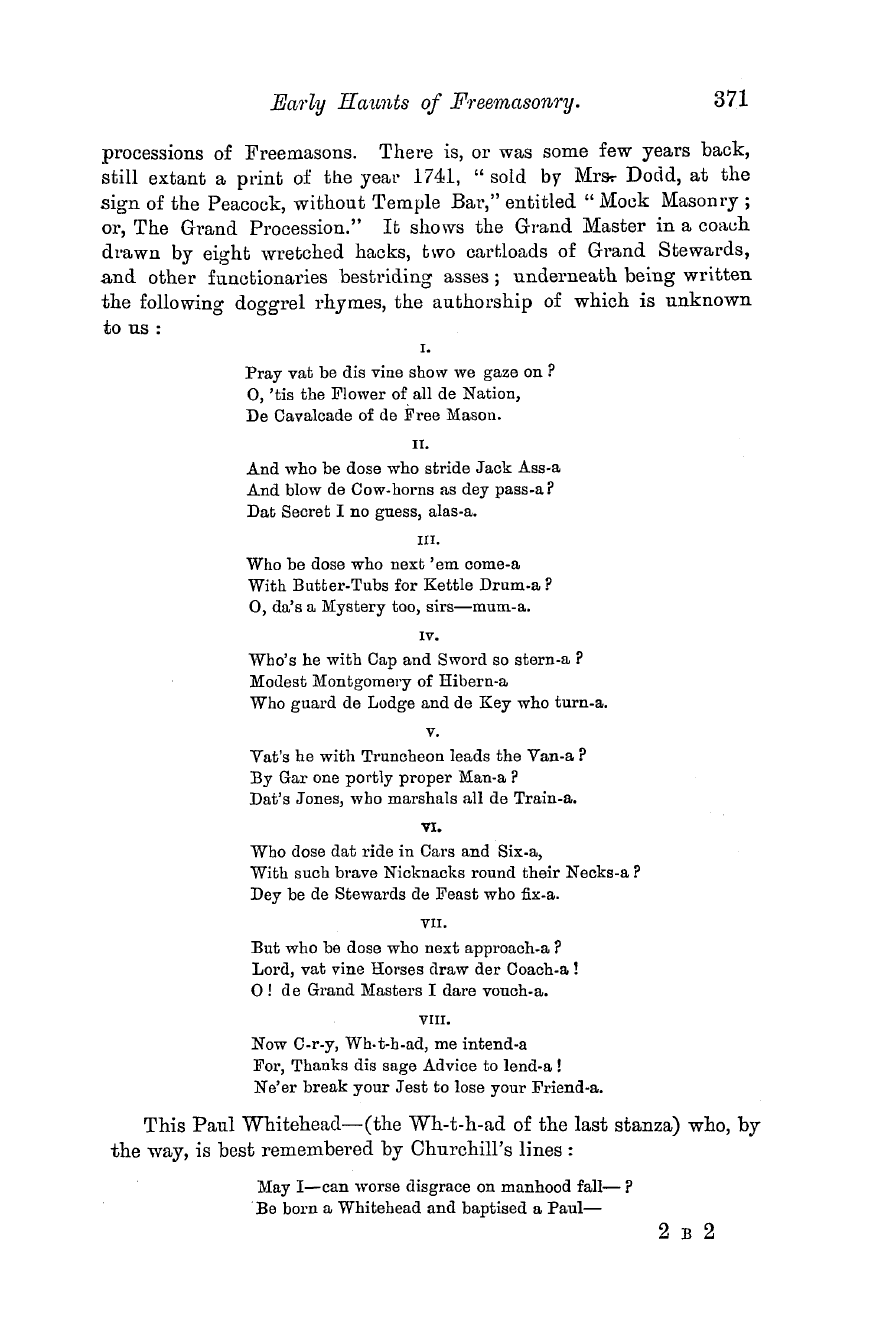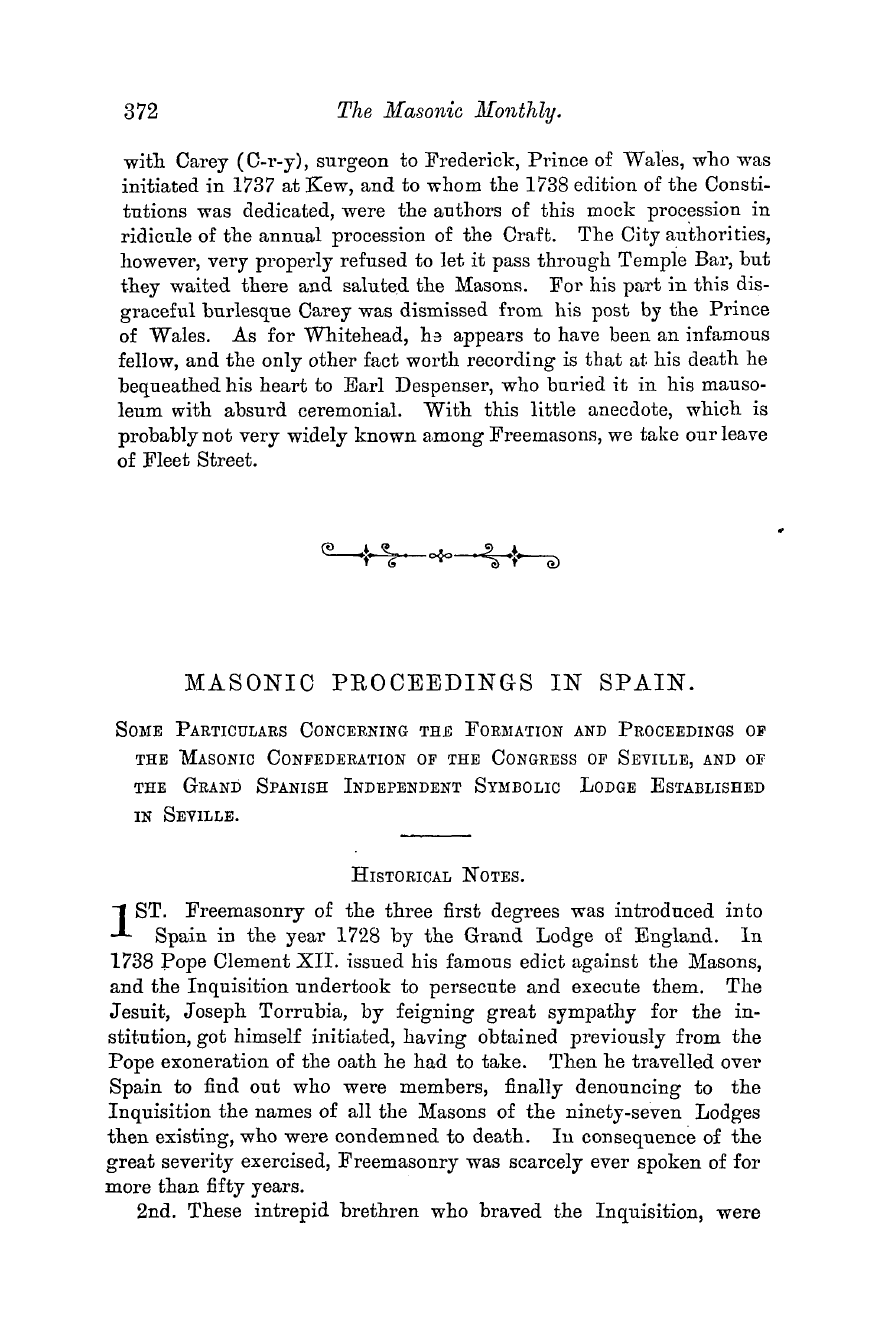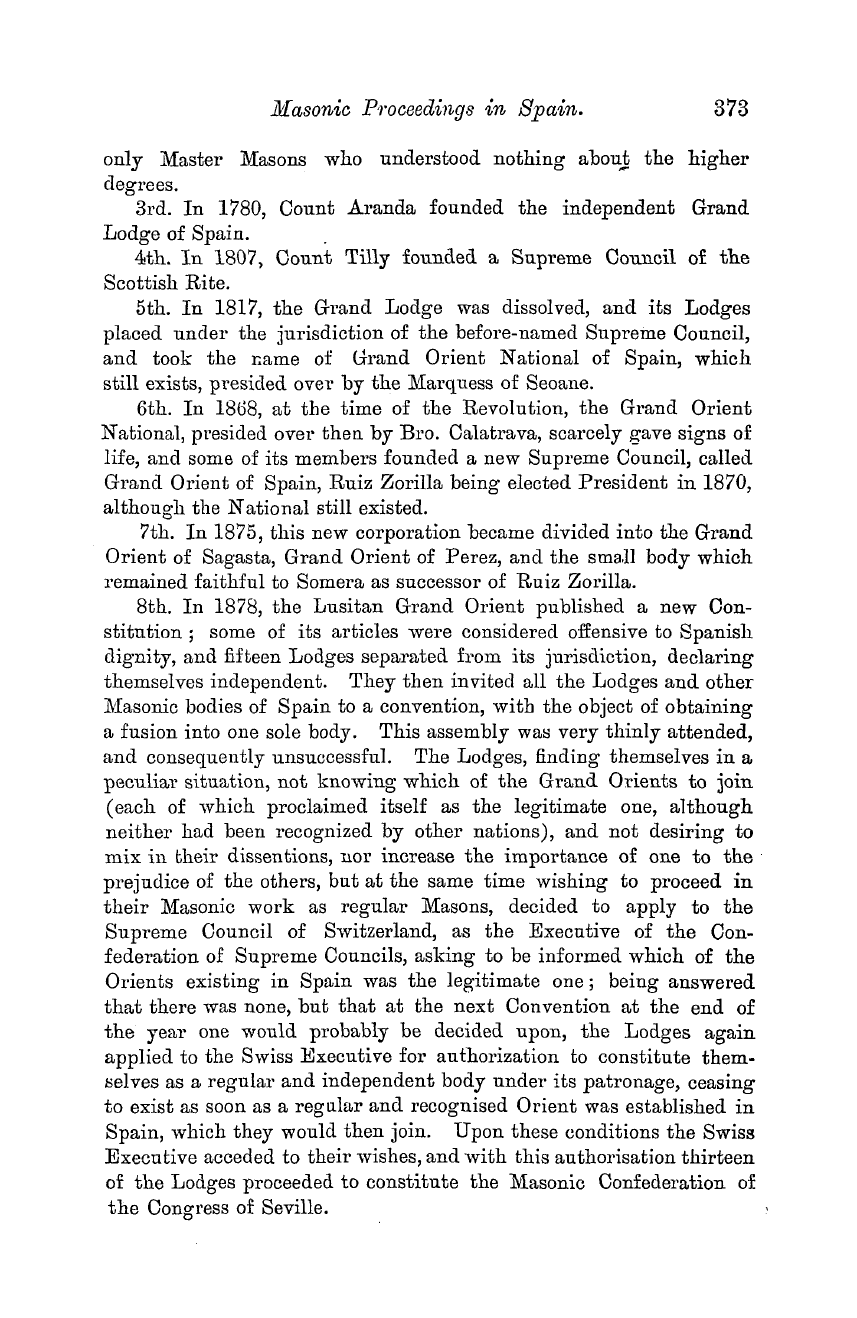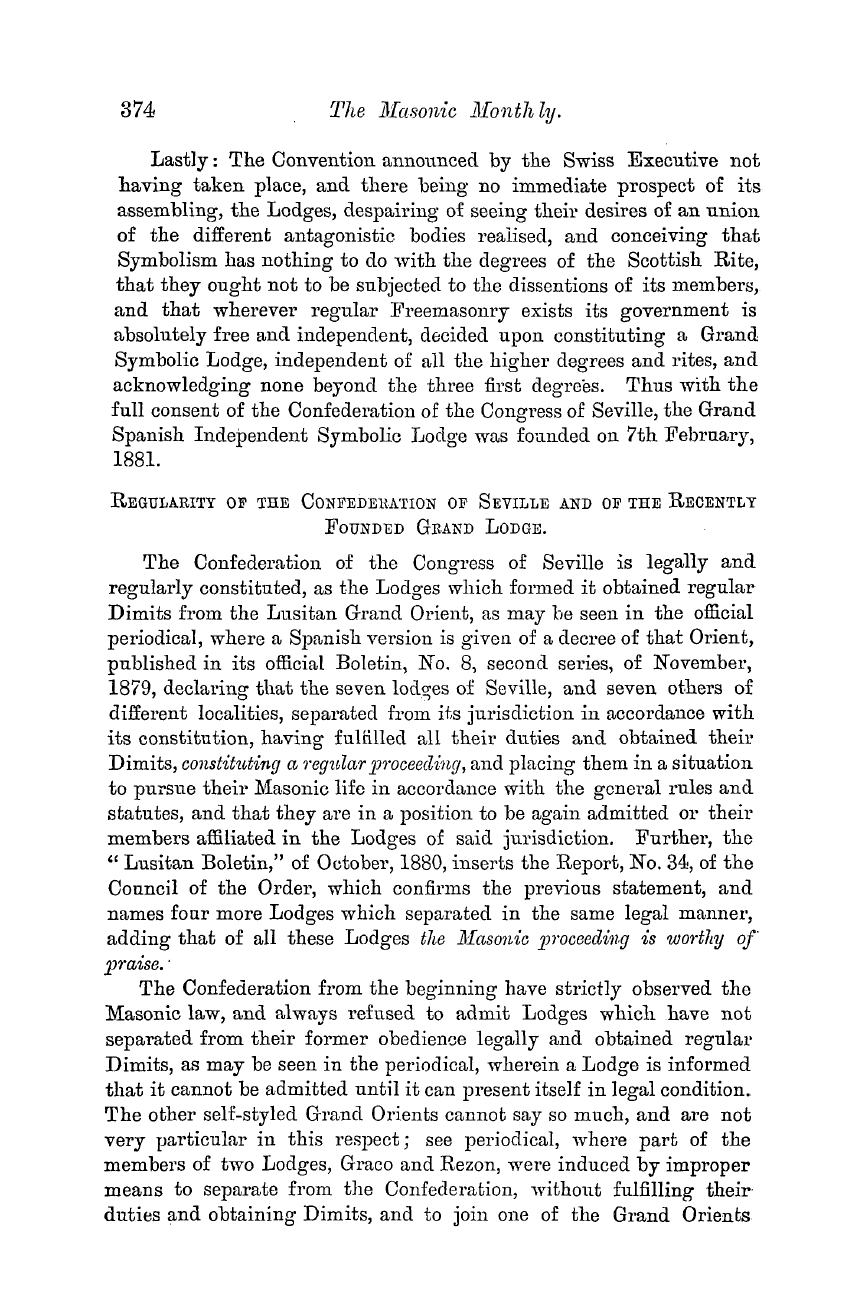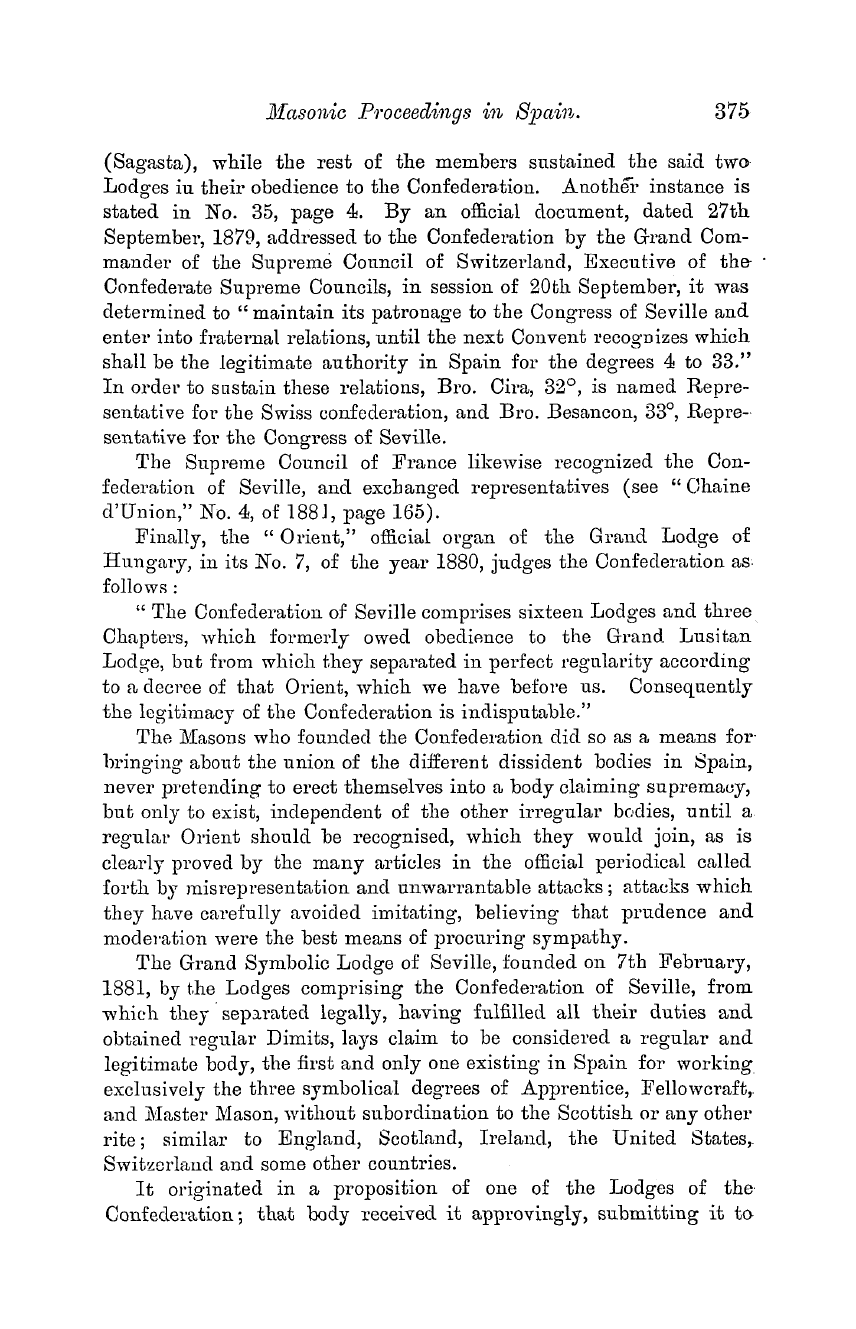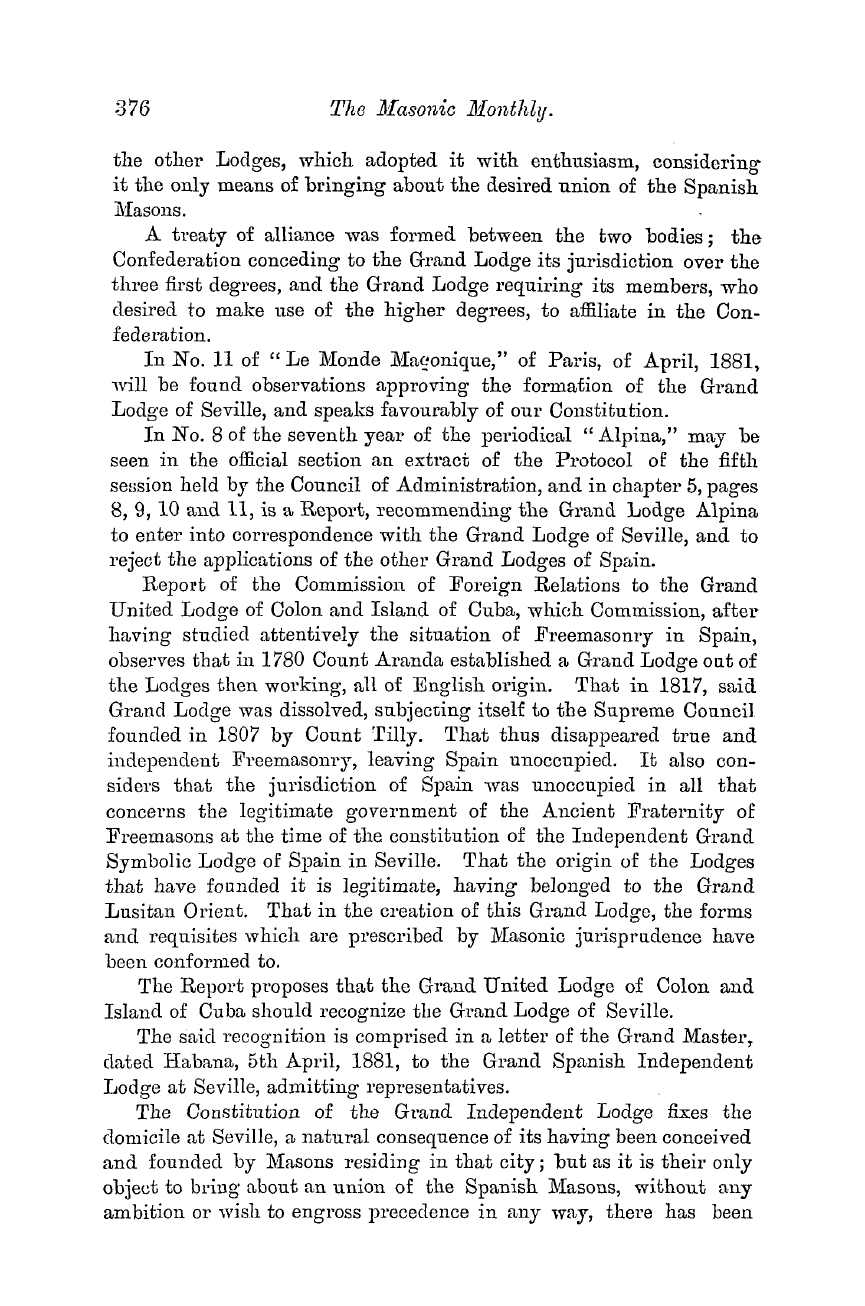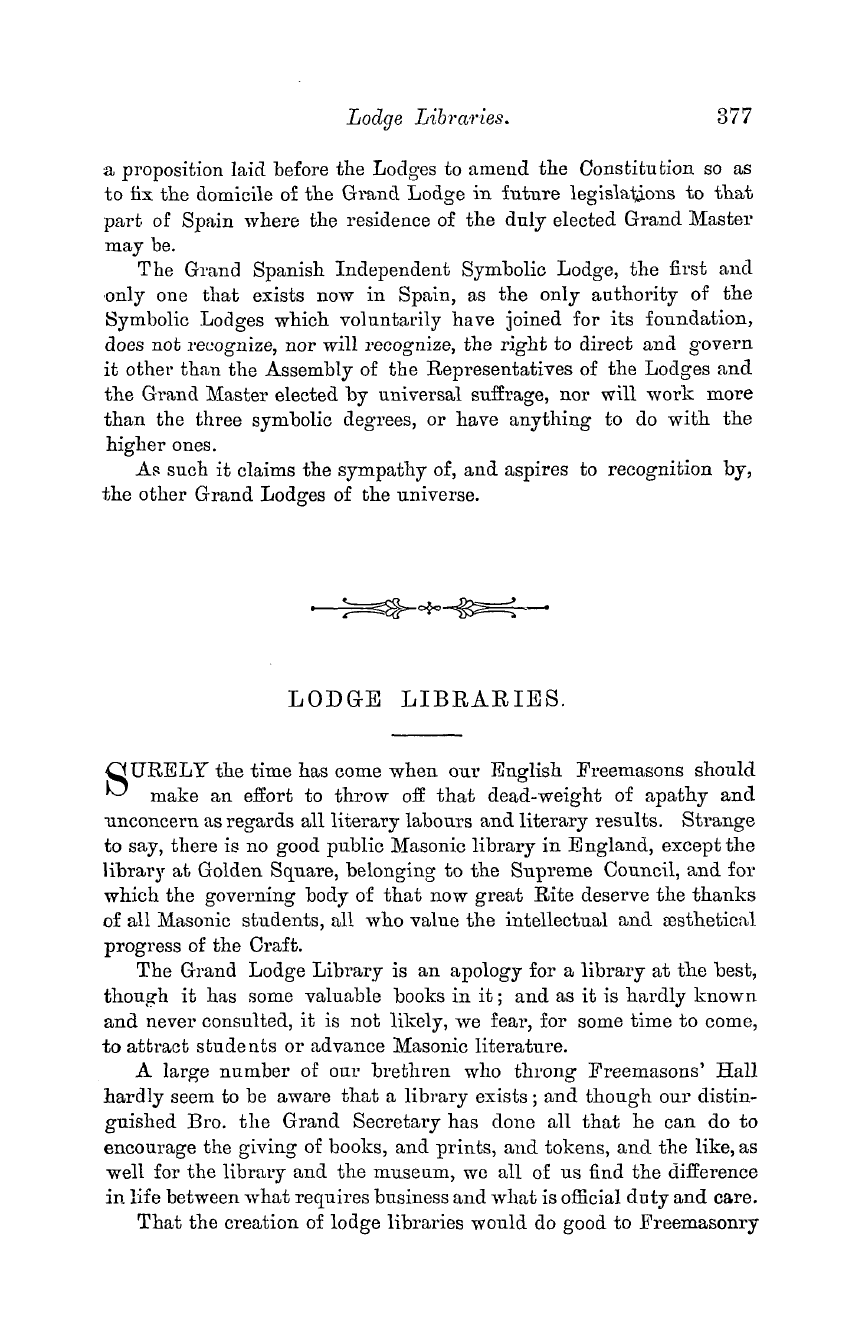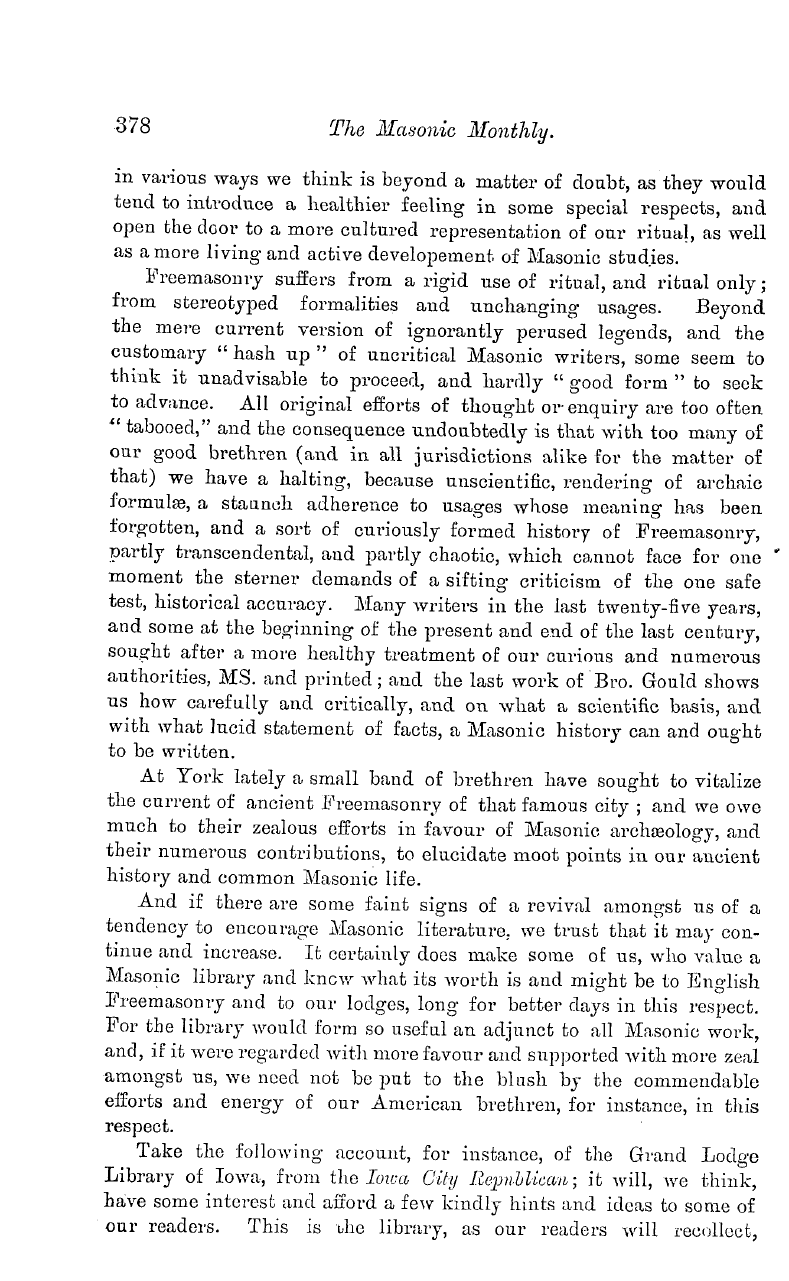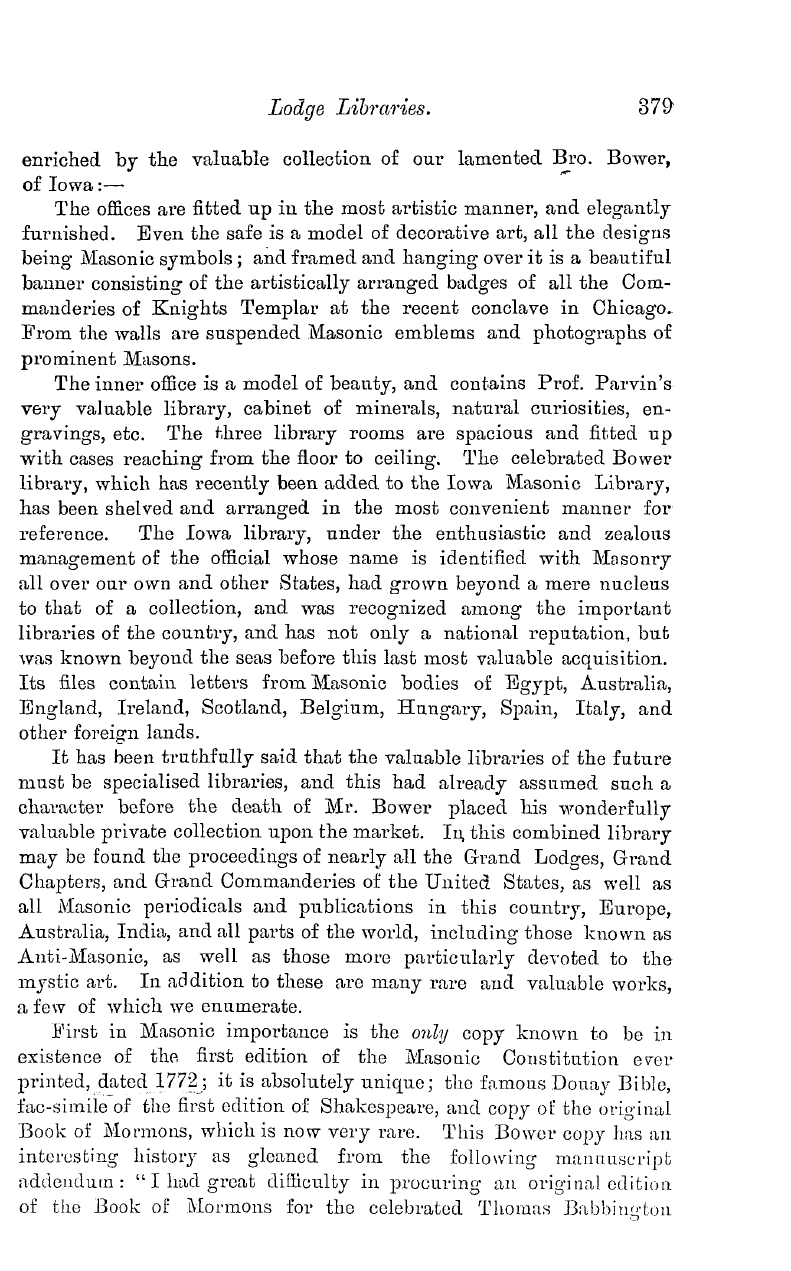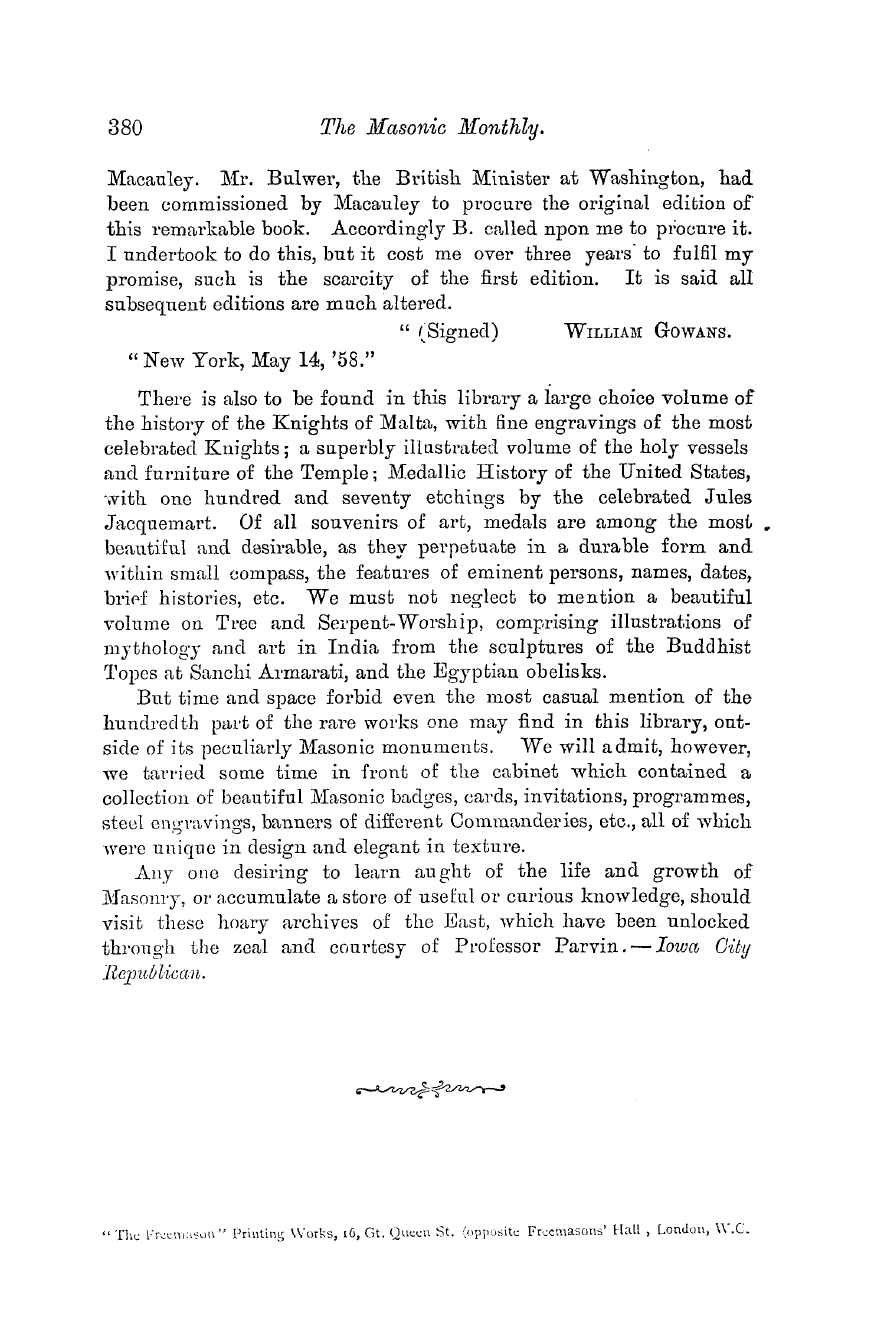Note: This text has been automatically extracted via Optical Character Recognition (OCR) software.
The Legend Of The Introduction Of Masons Into England.
with hay upon them , " etc . " Beneath the walls they erected a little hovel in which they slept . " * Wearmouth was in no better condition in 1074 , for on some monks going there to teach , etc ., " they erected some little habitations of wattle work . "f The church was cleared ,
" nothing more than the half-ruined walls of which were at this time standing" and it also was "roofed with thatch . " X In the introductory chapter § Simeon states that these " ancient dwellings of the Saints " were rebuilt , by the orders of Bishop Walcher . At the same time foundations of buildings , fitted for the reception of the monks ,
were laid near the walls of the Church of Durham , j | which Simeon says " now exist at Durham . " ^ " The then existing fabric was pulled down by order of his successor , William ; and in the ensuing- year "he laid the foundations of a fabric much larger and more noble , which
he intended to erect . In the year 1093 , as before mentioned , Bishop William and Prior Turgot , " who was second in authority after the Bishop in the church , and the other brethren , laid the first foundation stones . " The foundations are dug , and " there , whilst the monks were building their own offices , the bishop carried on the works of the church
at his own expense . " ** This , no doubt , only refers to the cost of the buildings , as in the continuation of the history of the Church it is stated that the agreement made by the Bishop wasff " that he should undertake the building of the church , and the monks that of its offices , each out of their own separate funds . " His successor , Ralph ,
carried on the works of building , and the " agreement" above mentioned having expired with the death of Bishop William , the monks devoted all their energies to the church and neglected the monastery . The work of the church was carried on with energy or slowly , as we
are told , " exactly as money was plentiful or scarce . " About 1128 , this Ralph , as before stated , " strengthened the City of Durham with a stronger and loftier wall He built a rampart which extended all round , from the choir of the church to the wall of the castle , " and cleared away the " poor houses " between
them . Moreover , " he united the two opposite banks of the river Wear by building a bridge of stone of several arches , a work of considerable magnitude . " He also built Norham Castle . X + The bridge mentioned is now called Framwellgate Bridge , and , as Mr . Stevenson points out in a note , it is " a proof to the present day of the excellency of the Bishop ' s masonry . " He died about the year 1128 . In 1144 , the wall which surrounded the church of Yarrow was
Note: This text has been automatically extracted via Optical Character Recognition (OCR) software.
The Legend Of The Introduction Of Masons Into England.
with hay upon them , " etc . " Beneath the walls they erected a little hovel in which they slept . " * Wearmouth was in no better condition in 1074 , for on some monks going there to teach , etc ., " they erected some little habitations of wattle work . "f The church was cleared ,
" nothing more than the half-ruined walls of which were at this time standing" and it also was "roofed with thatch . " X In the introductory chapter § Simeon states that these " ancient dwellings of the Saints " were rebuilt , by the orders of Bishop Walcher . At the same time foundations of buildings , fitted for the reception of the monks ,
were laid near the walls of the Church of Durham , j | which Simeon says " now exist at Durham . " ^ " The then existing fabric was pulled down by order of his successor , William ; and in the ensuing- year "he laid the foundations of a fabric much larger and more noble , which
he intended to erect . In the year 1093 , as before mentioned , Bishop William and Prior Turgot , " who was second in authority after the Bishop in the church , and the other brethren , laid the first foundation stones . " The foundations are dug , and " there , whilst the monks were building their own offices , the bishop carried on the works of the church
at his own expense . " ** This , no doubt , only refers to the cost of the buildings , as in the continuation of the history of the Church it is stated that the agreement made by the Bishop wasff " that he should undertake the building of the church , and the monks that of its offices , each out of their own separate funds . " His successor , Ralph ,
carried on the works of building , and the " agreement" above mentioned having expired with the death of Bishop William , the monks devoted all their energies to the church and neglected the monastery . The work of the church was carried on with energy or slowly , as we
are told , " exactly as money was plentiful or scarce . " About 1128 , this Ralph , as before stated , " strengthened the City of Durham with a stronger and loftier wall He built a rampart which extended all round , from the choir of the church to the wall of the castle , " and cleared away the " poor houses " between
them . Moreover , " he united the two opposite banks of the river Wear by building a bridge of stone of several arches , a work of considerable magnitude . " He also built Norham Castle . X + The bridge mentioned is now called Framwellgate Bridge , and , as Mr . Stevenson points out in a note , it is " a proof to the present day of the excellency of the Bishop ' s masonry . " He died about the year 1128 . In 1144 , the wall which surrounded the church of Yarrow was




















